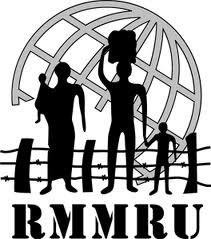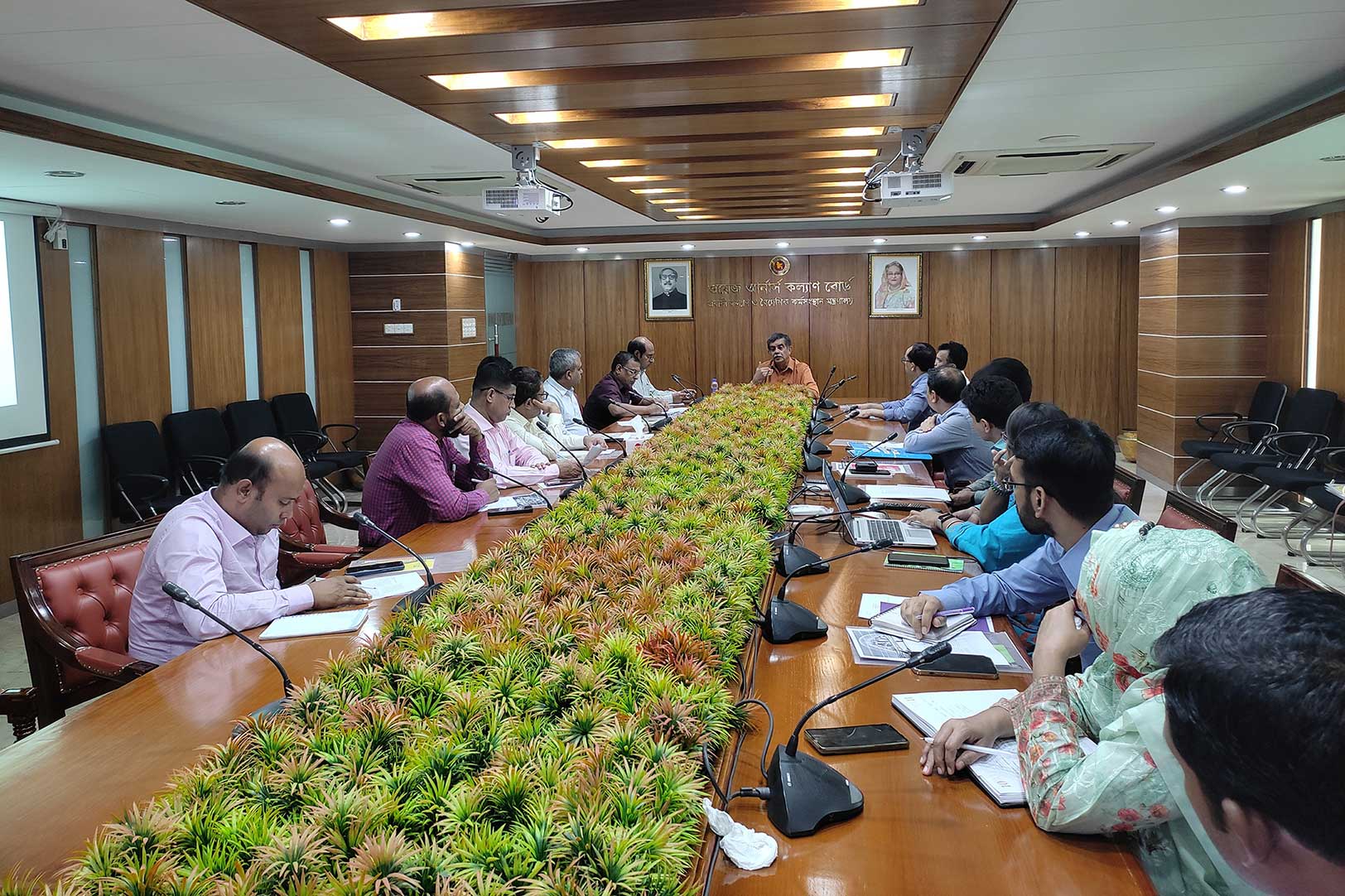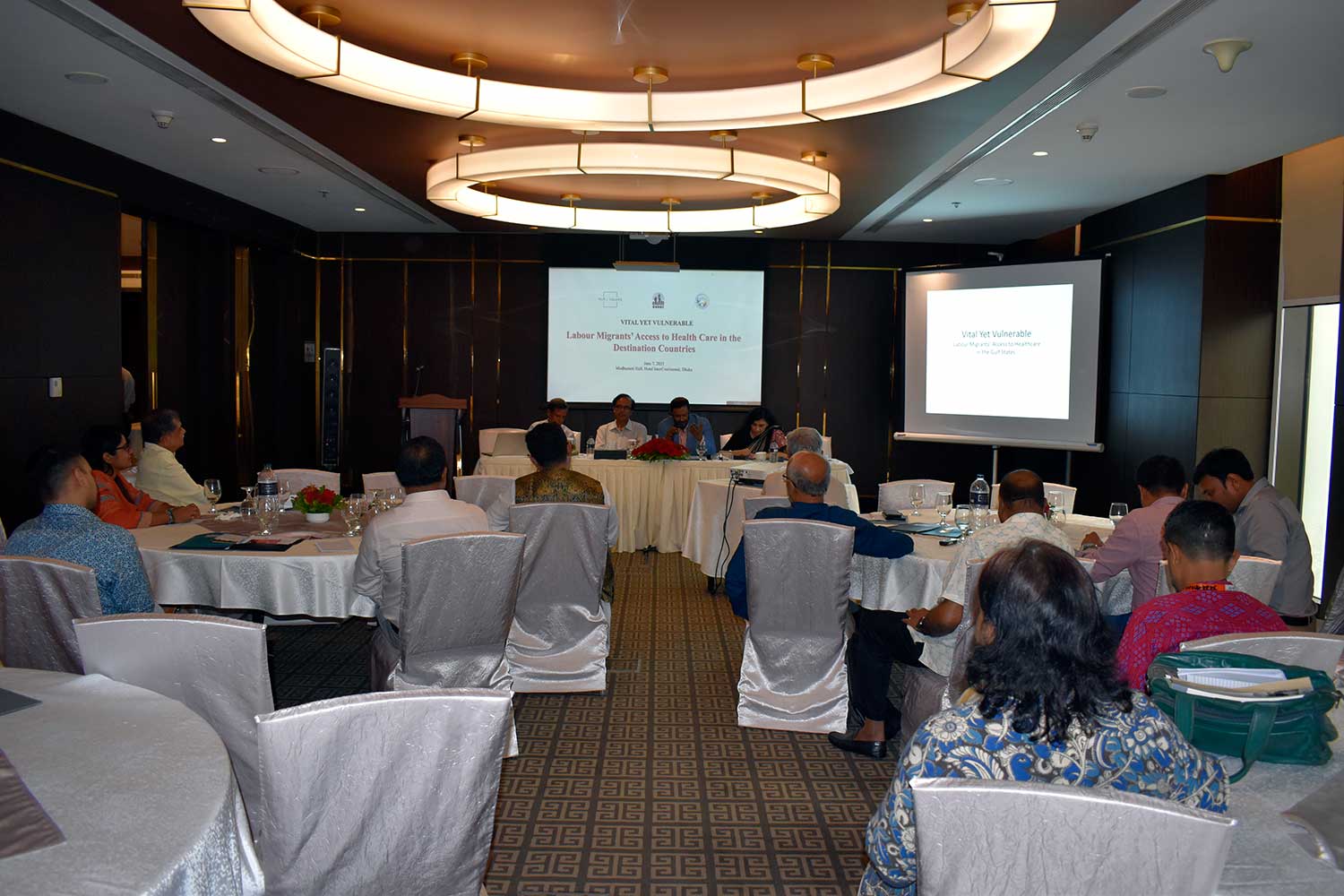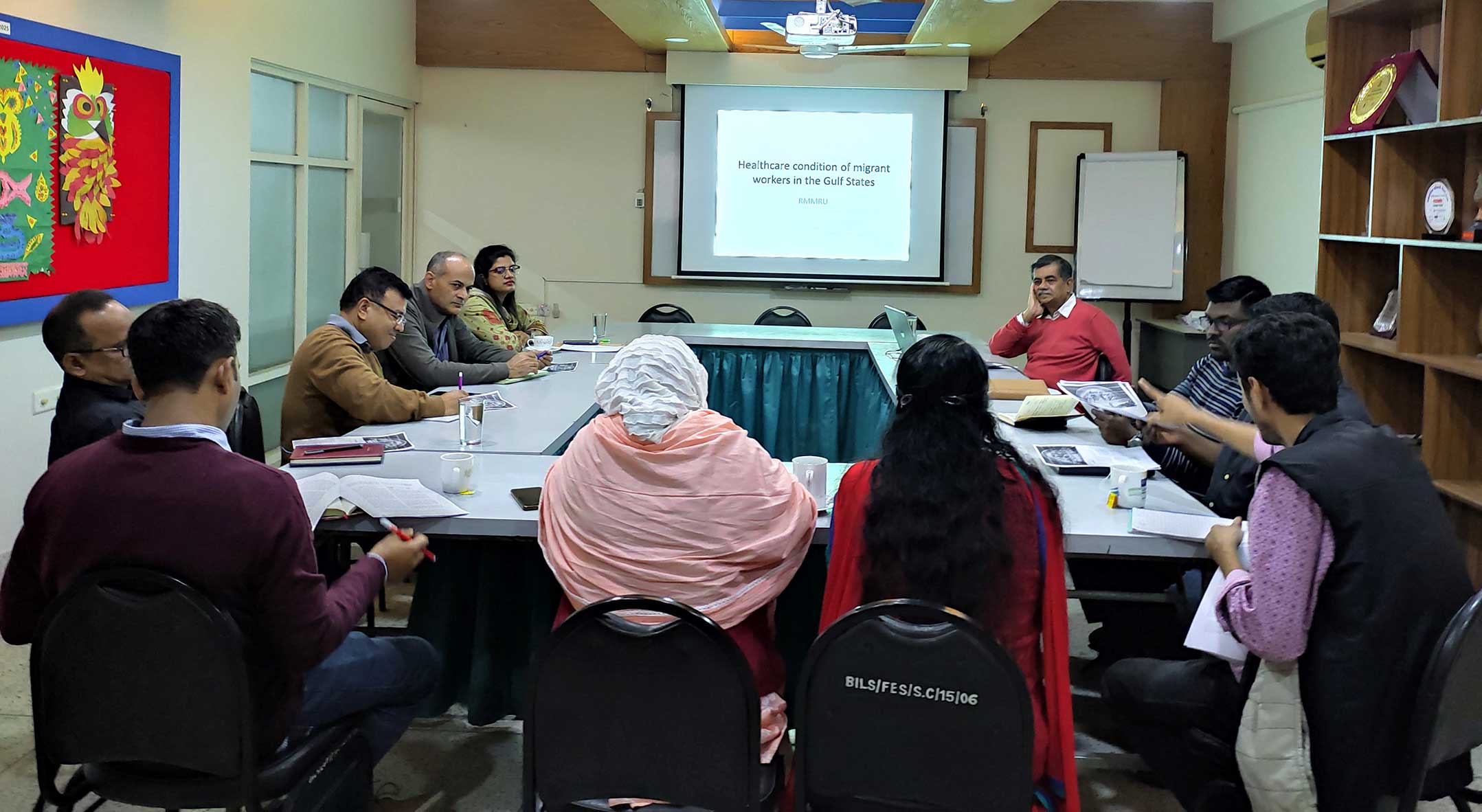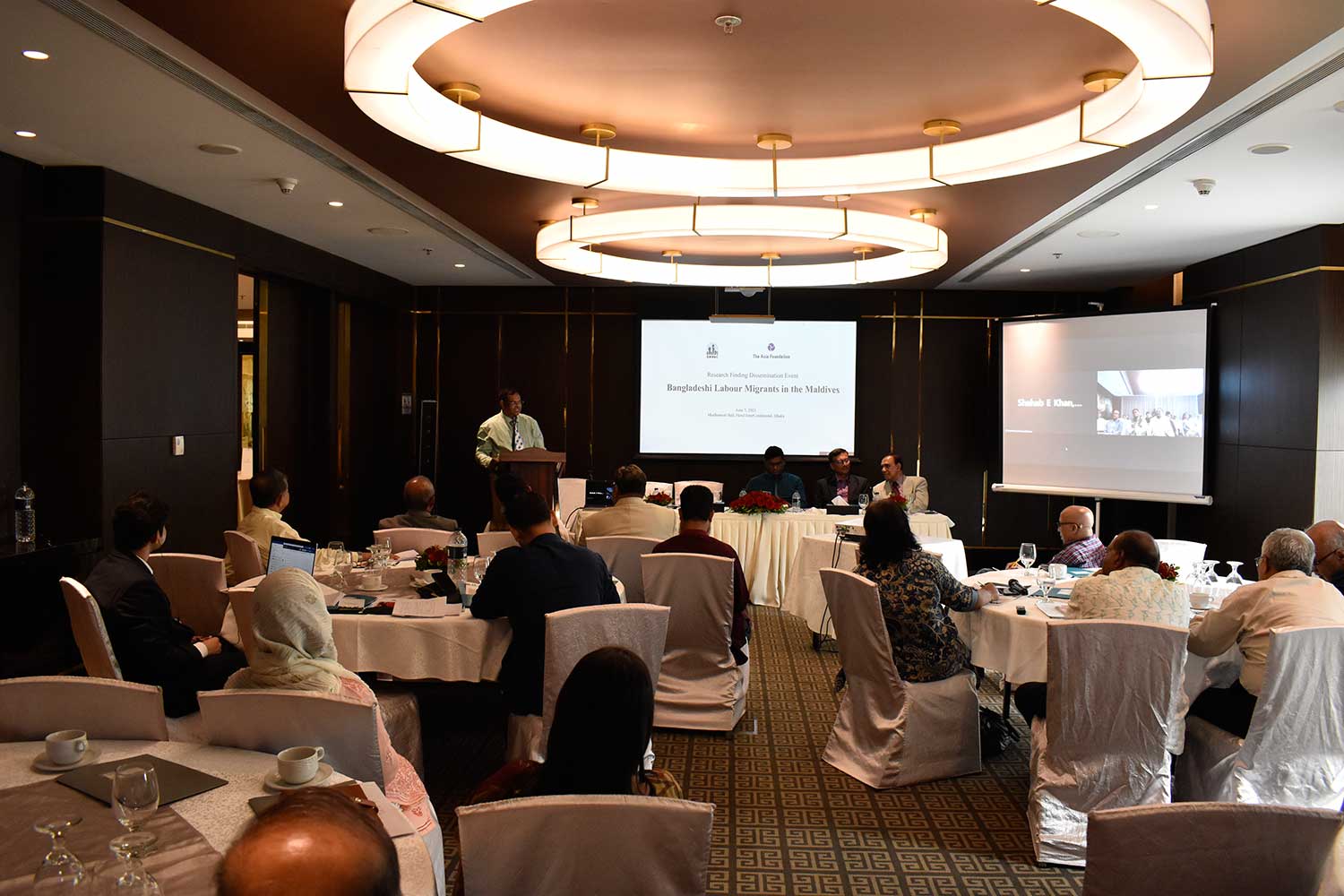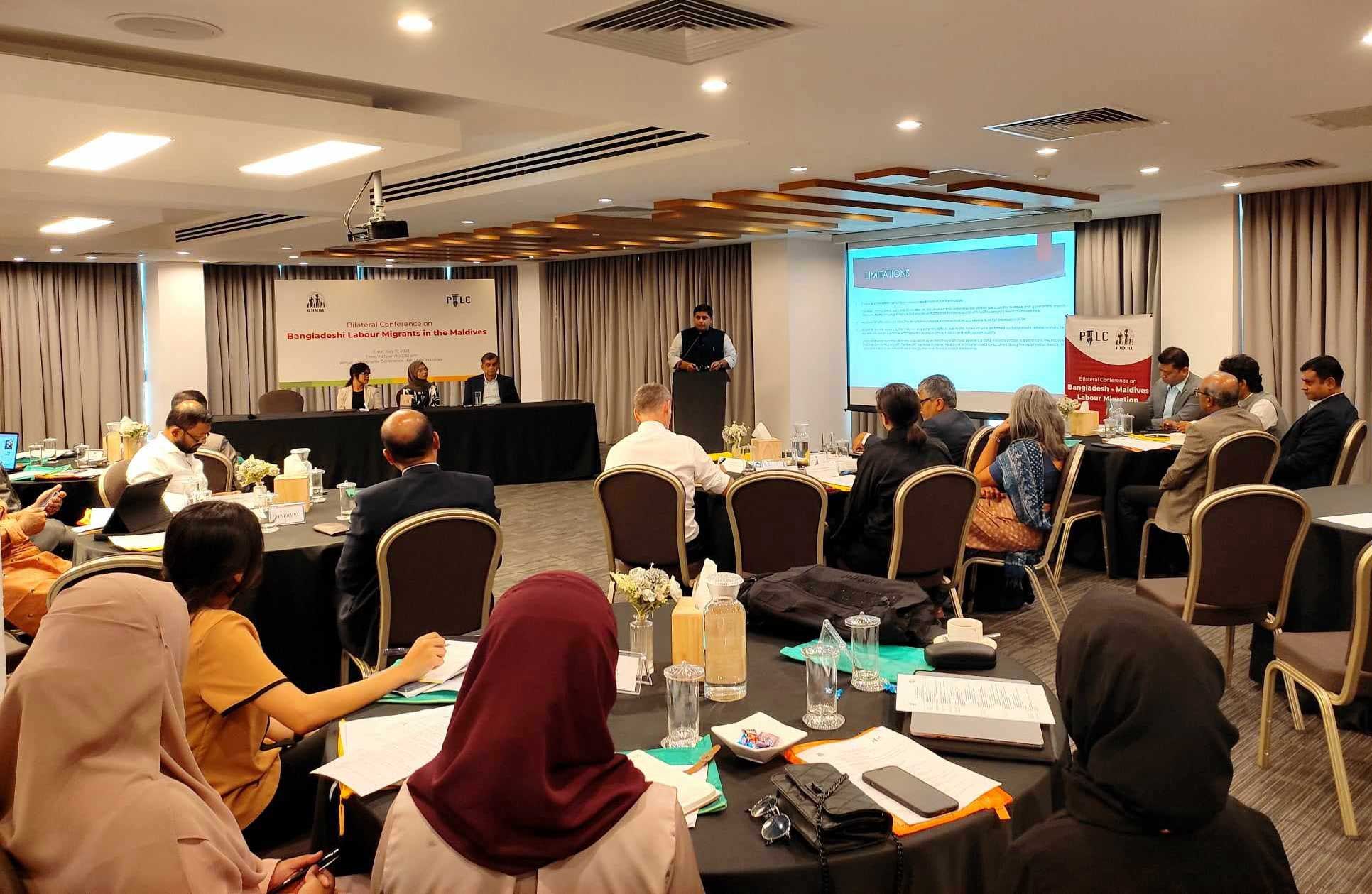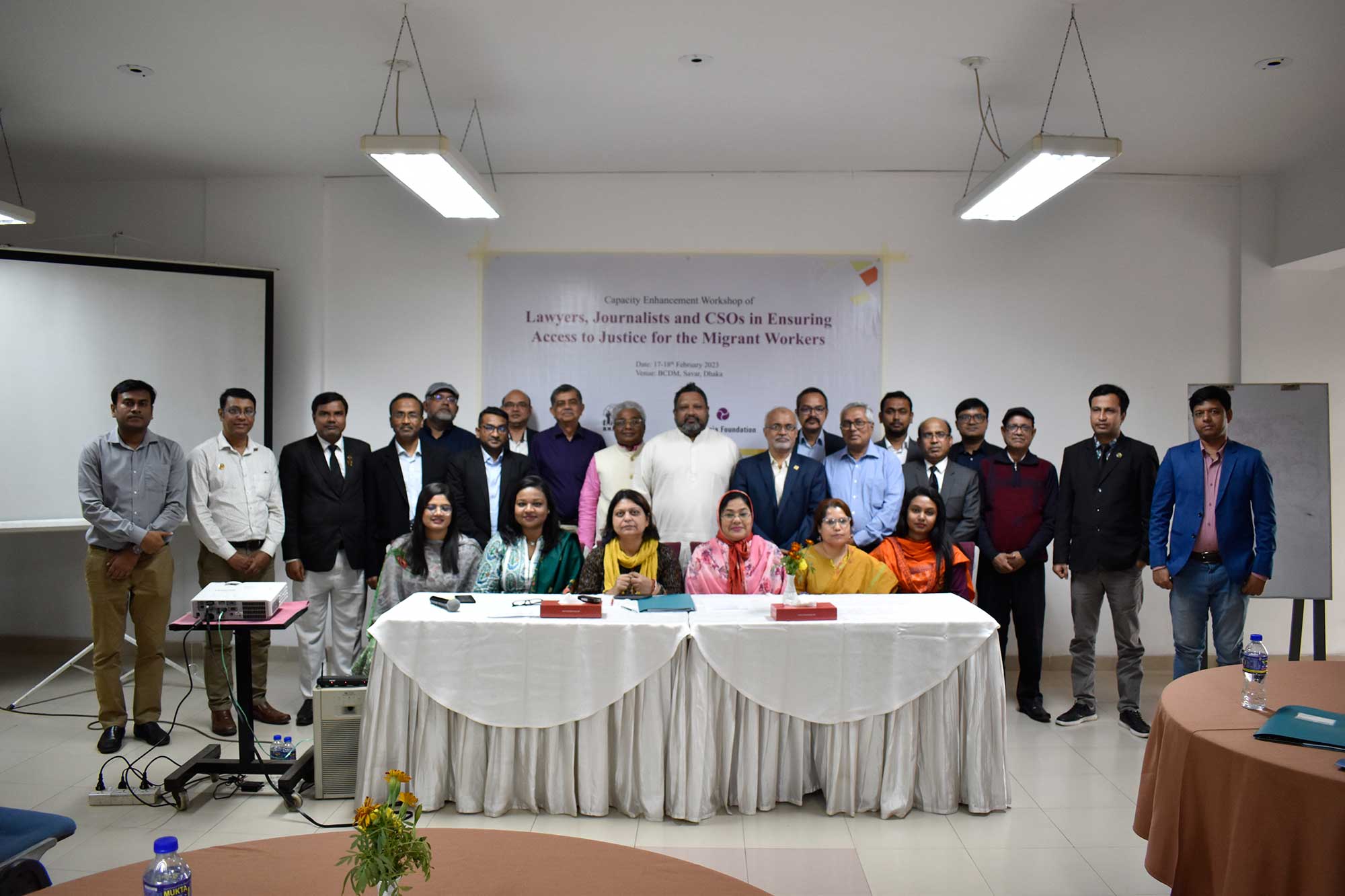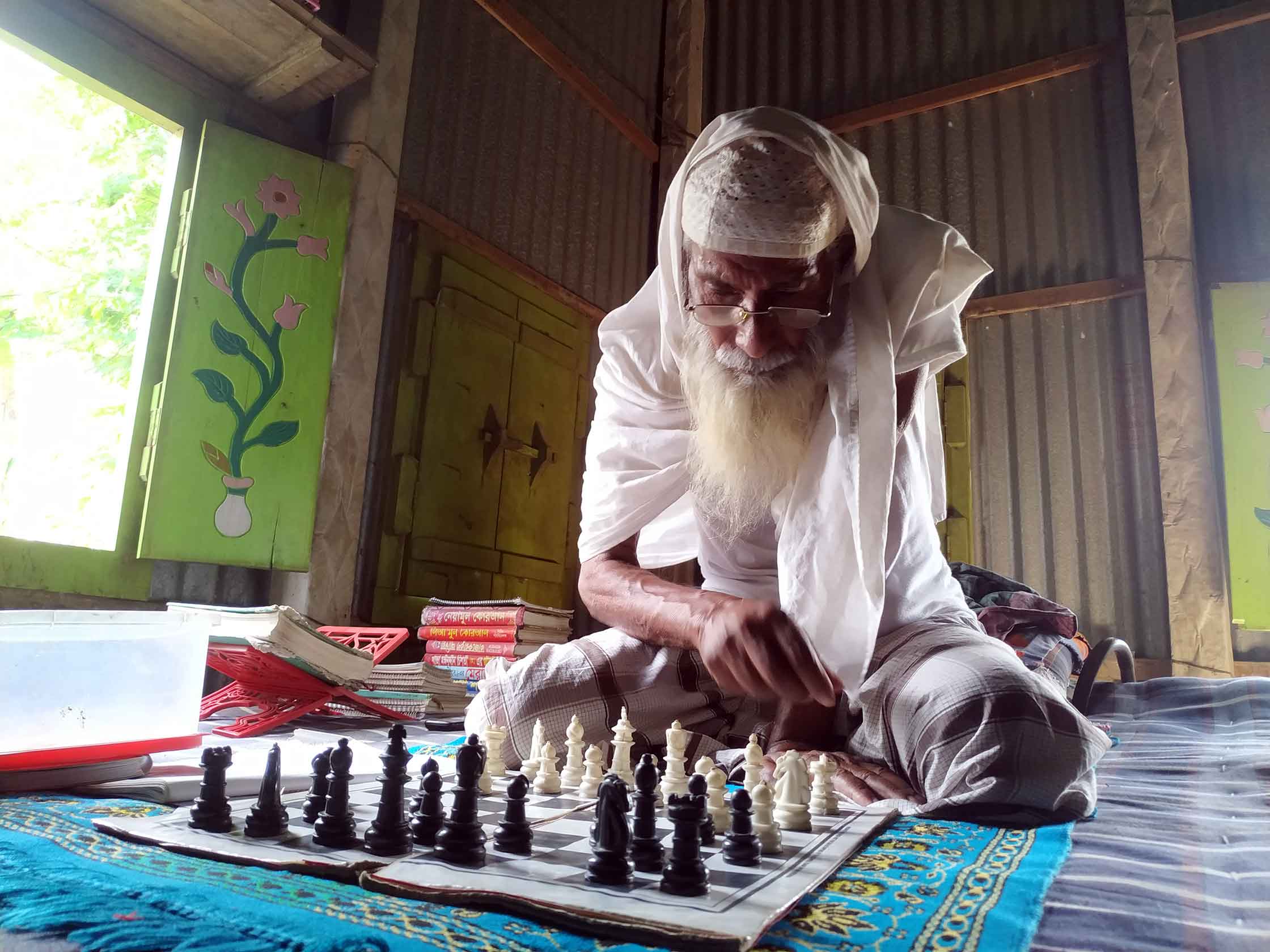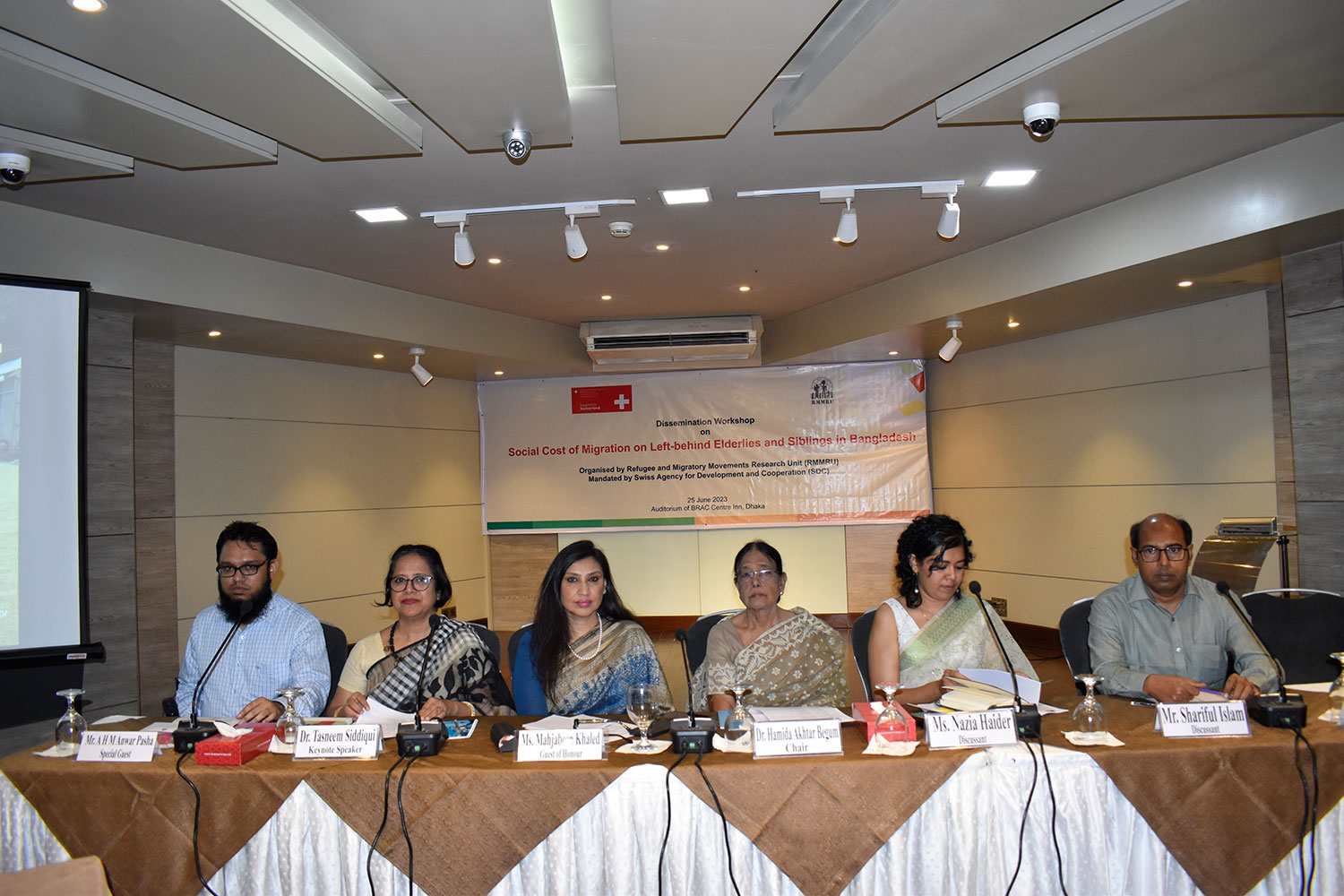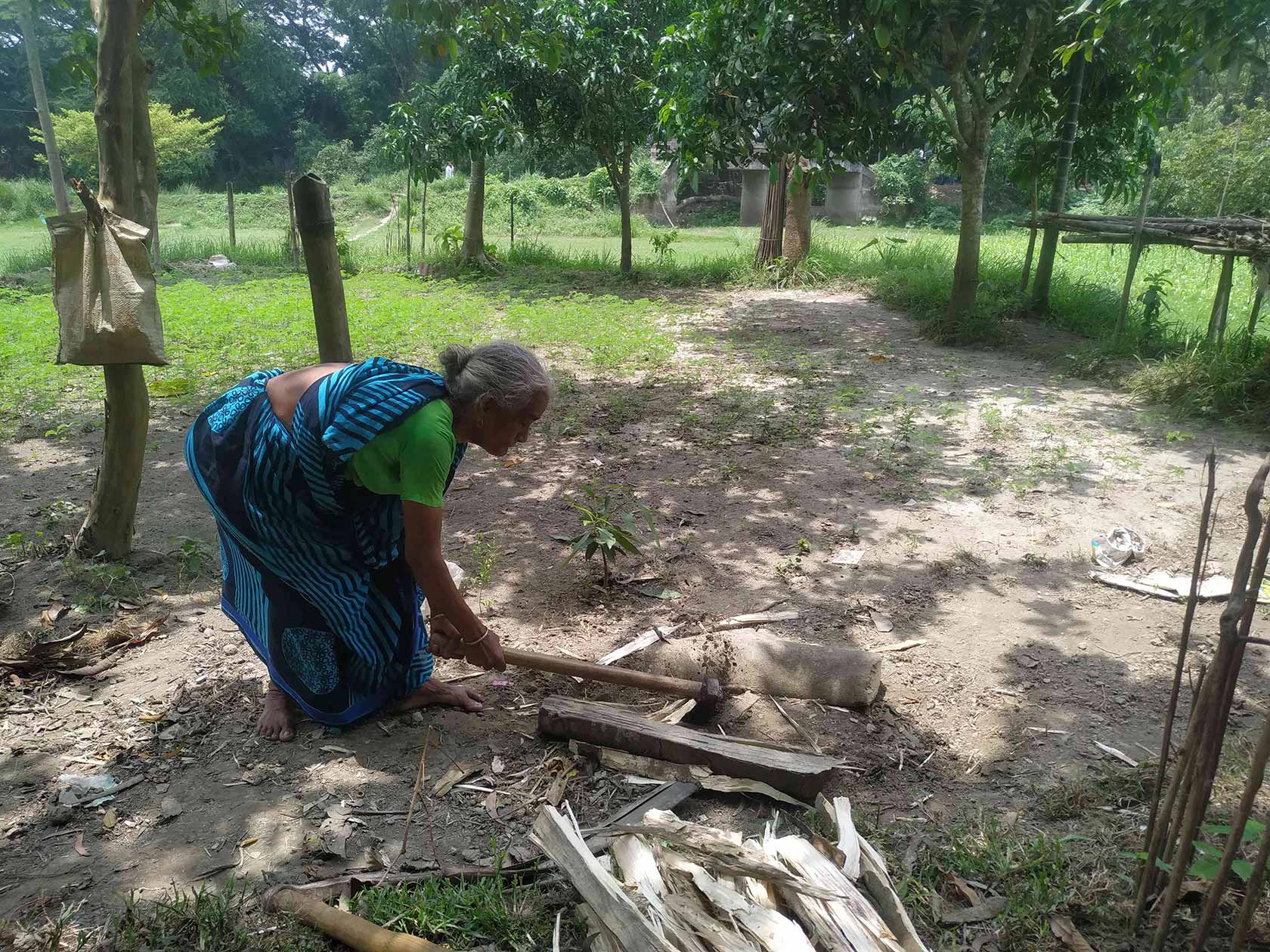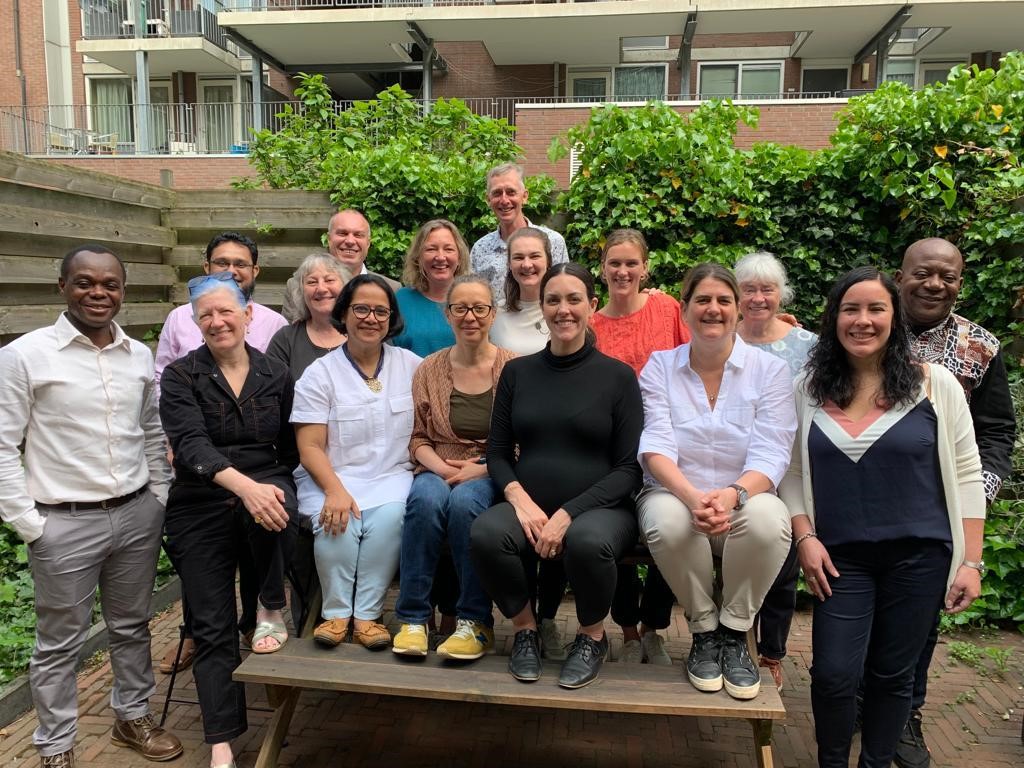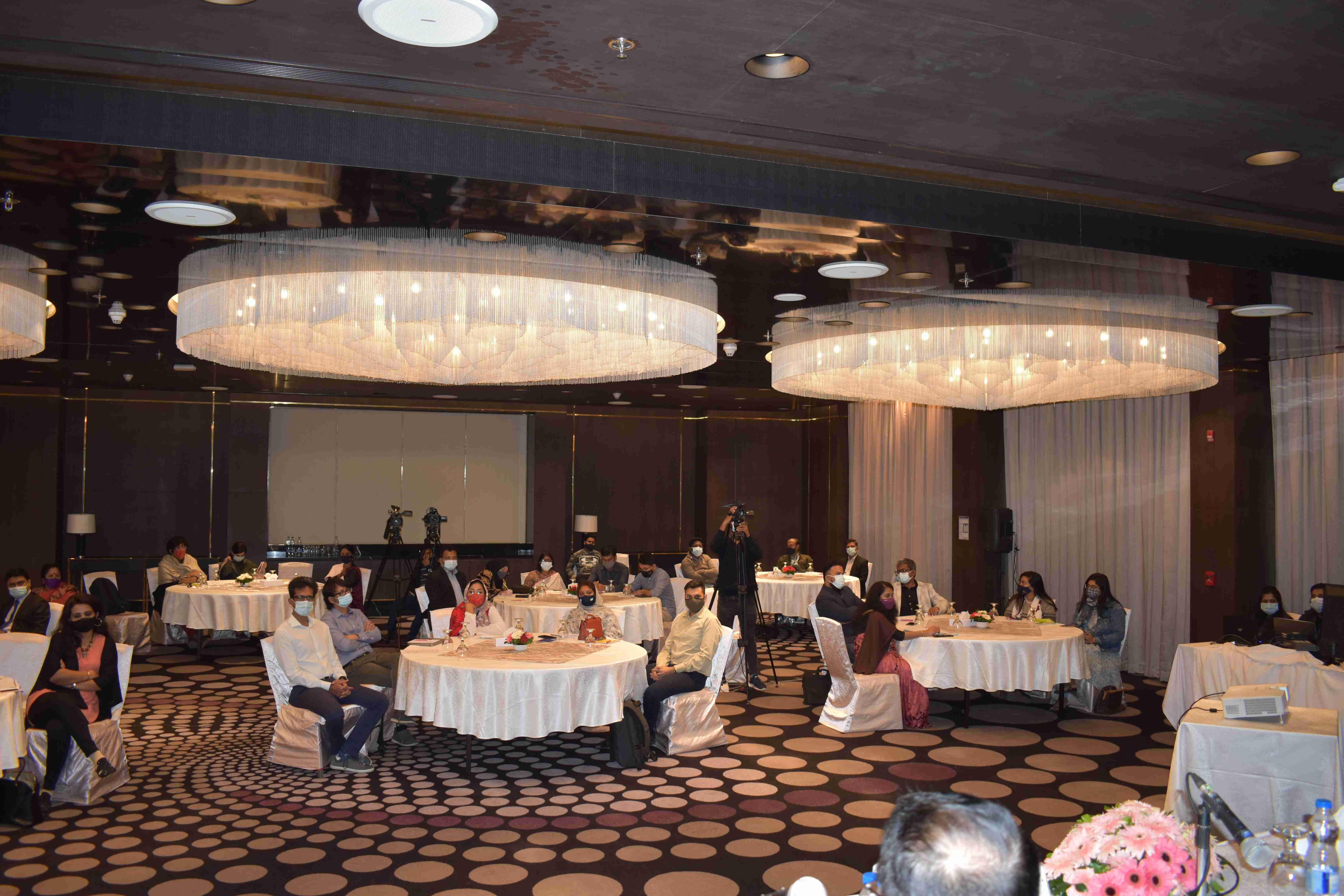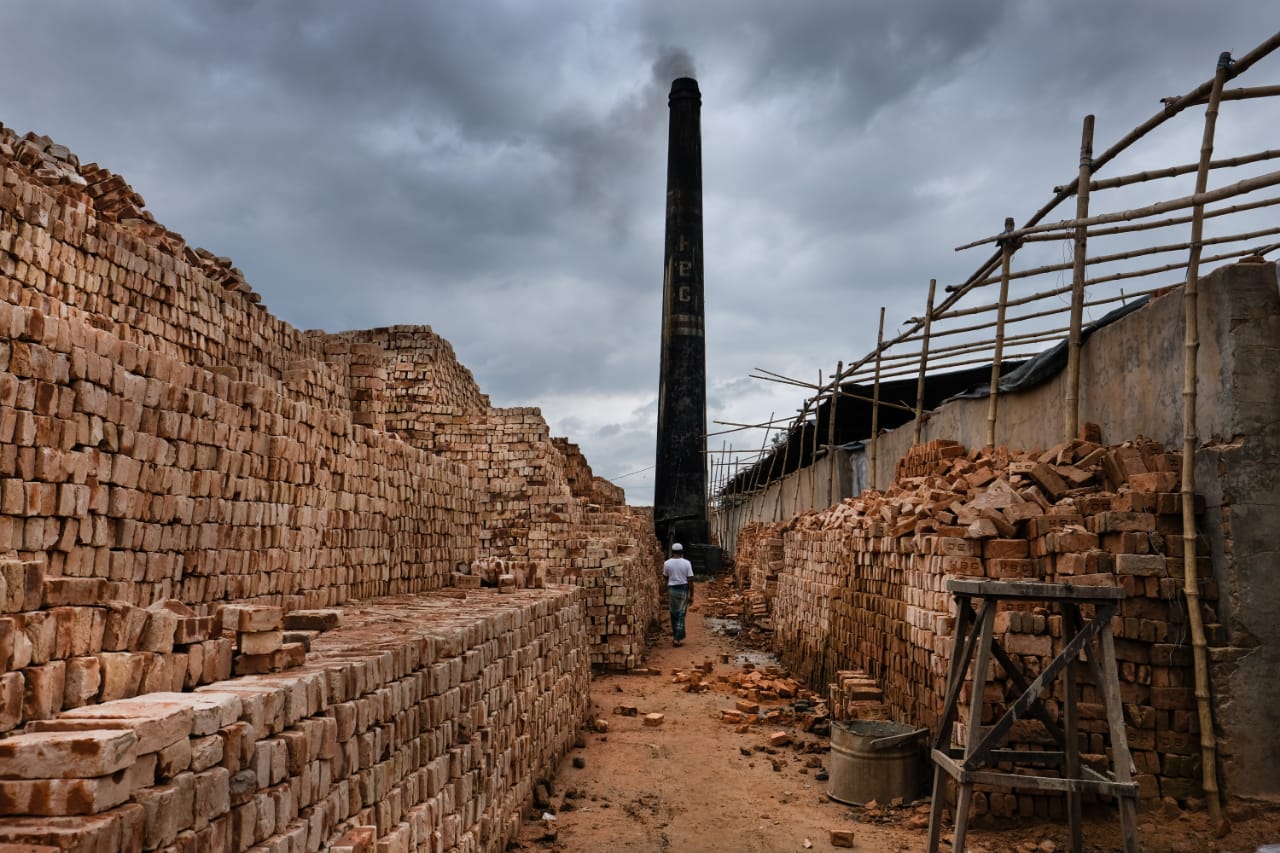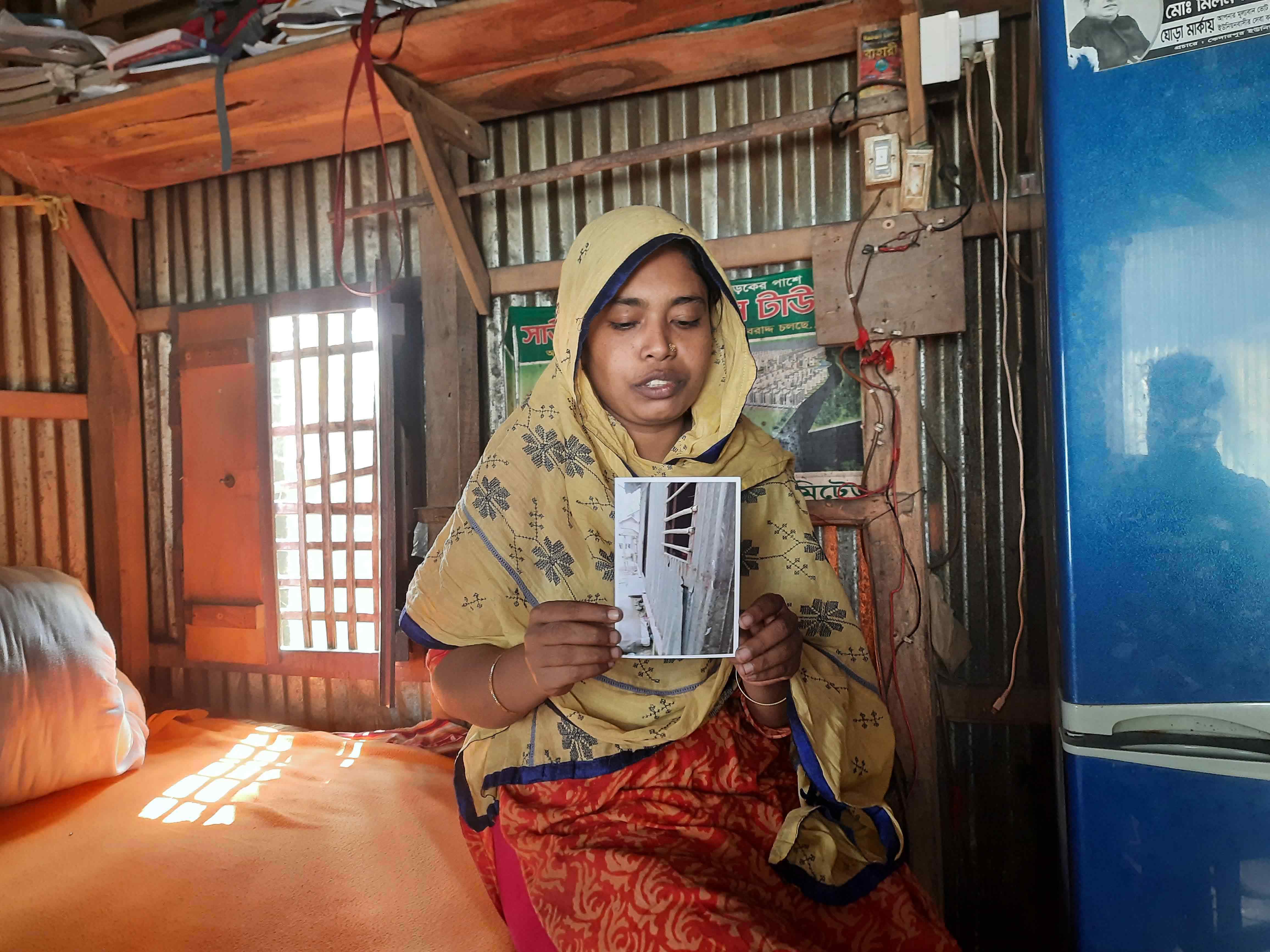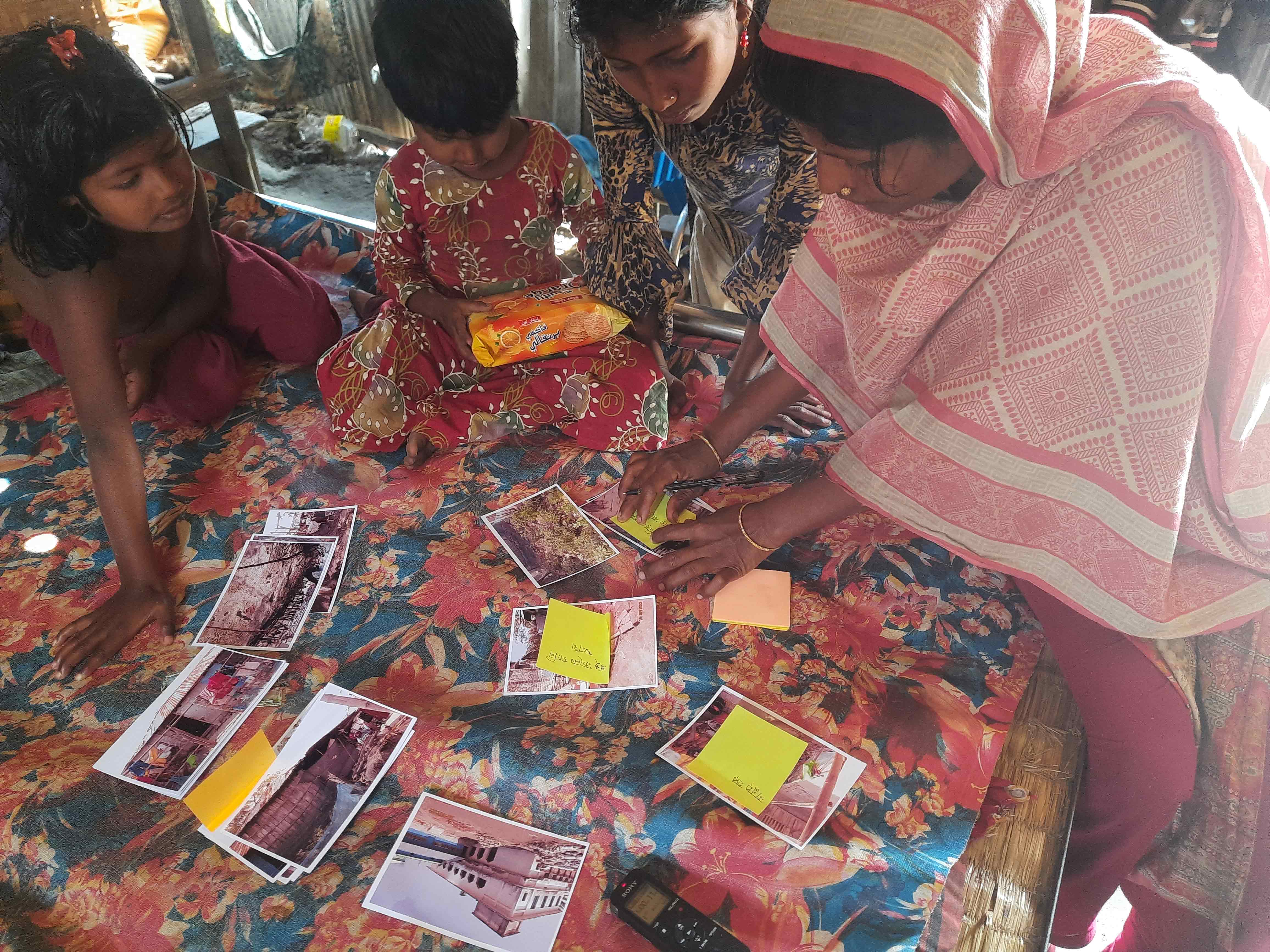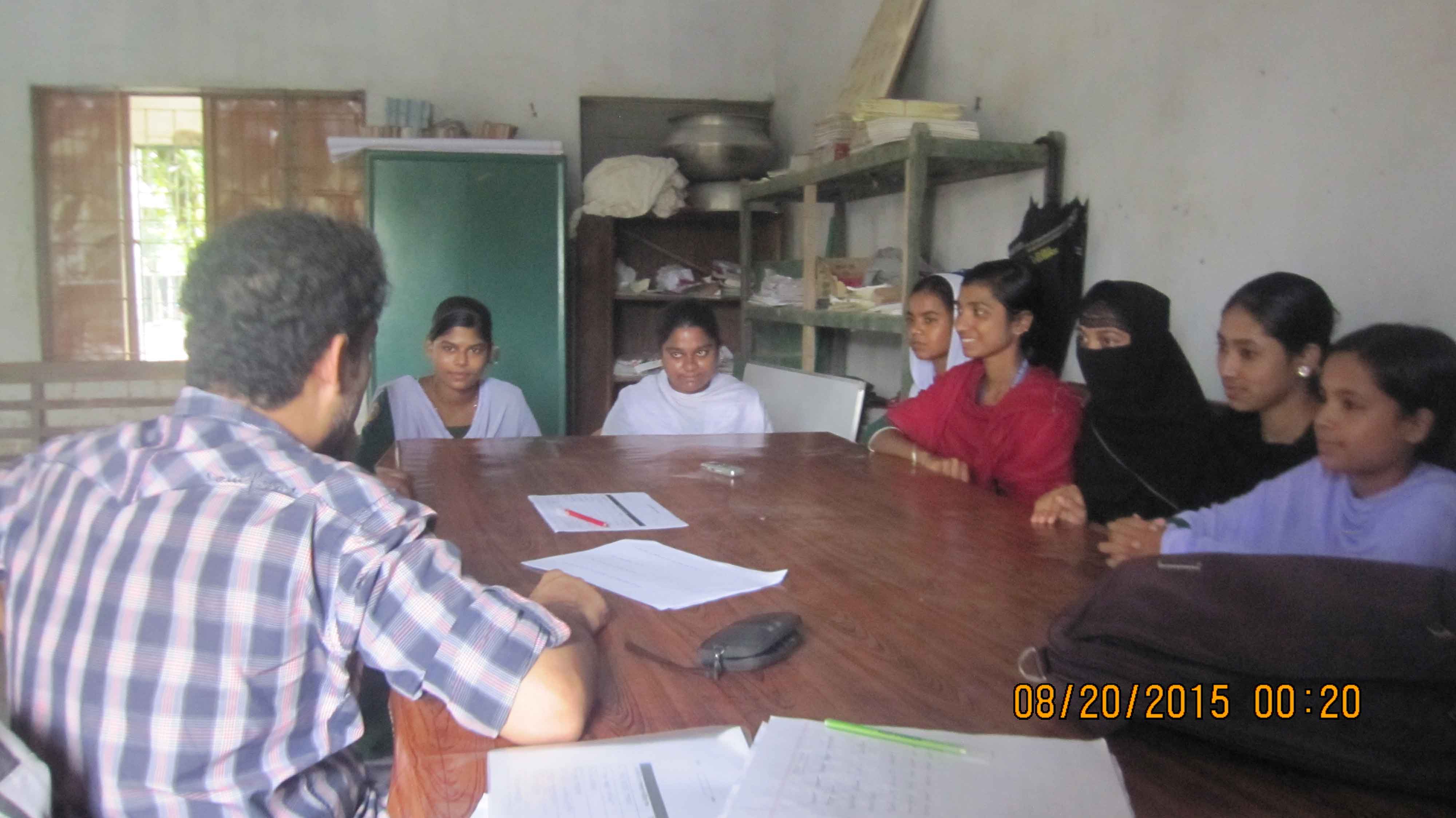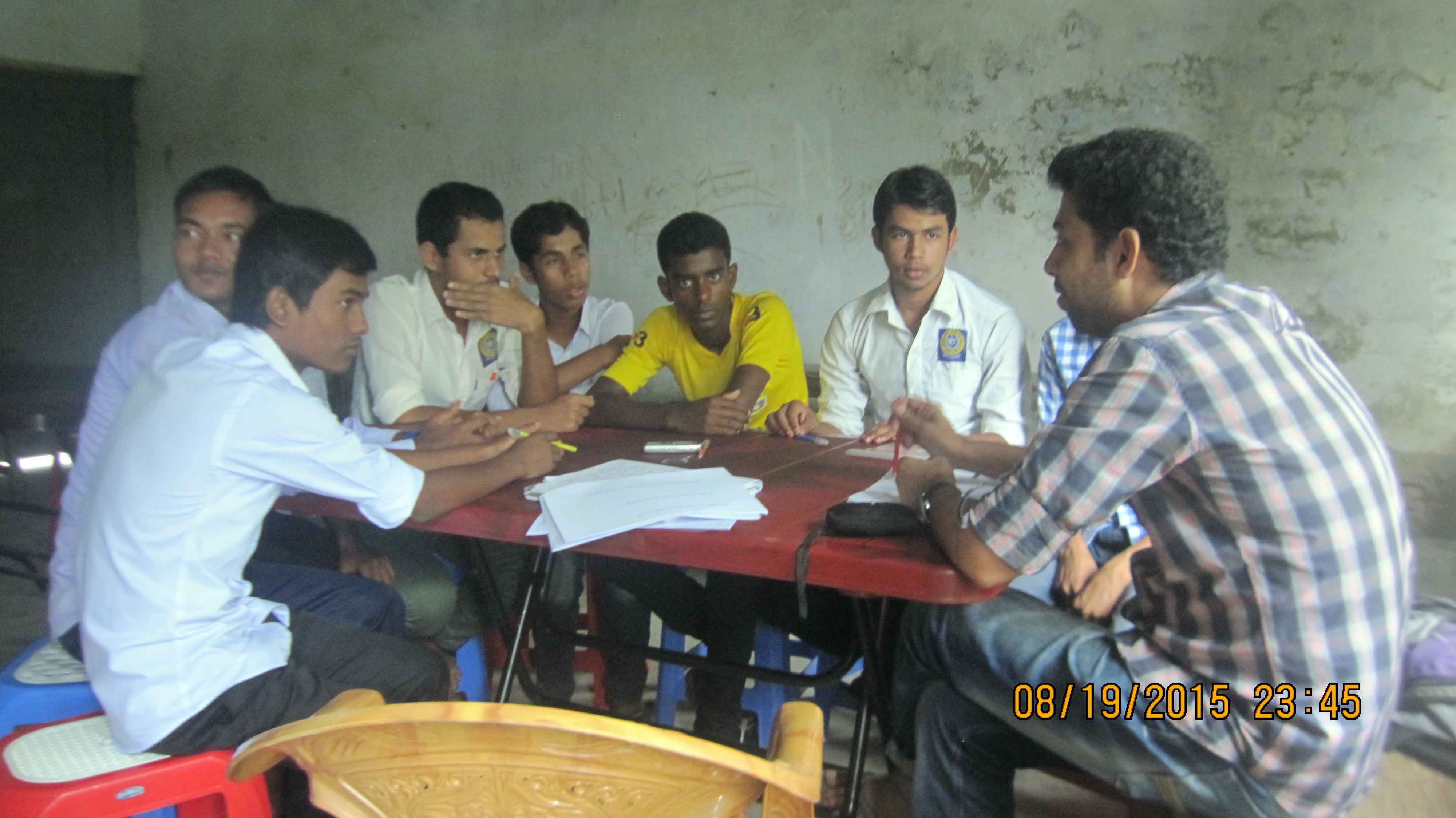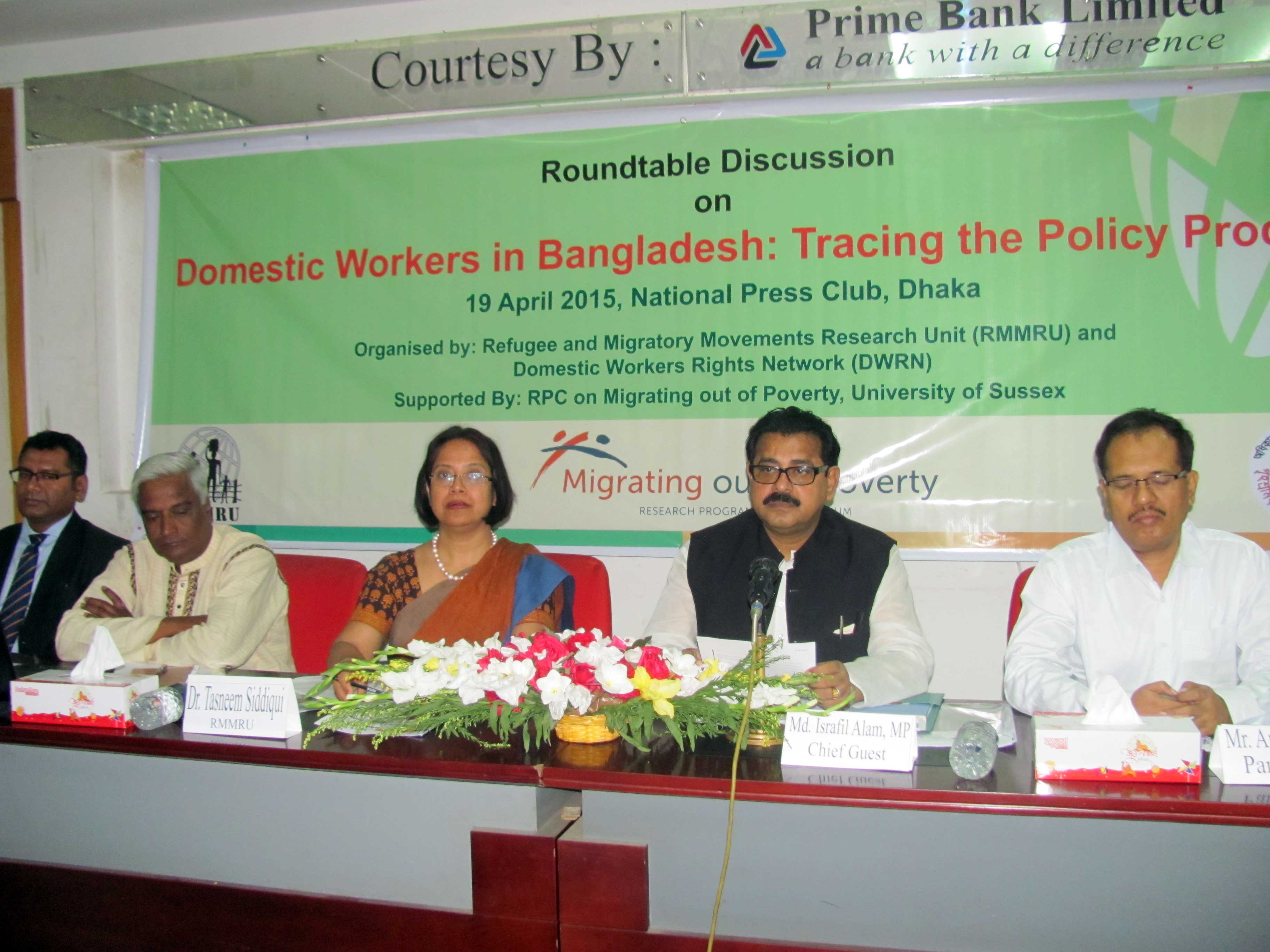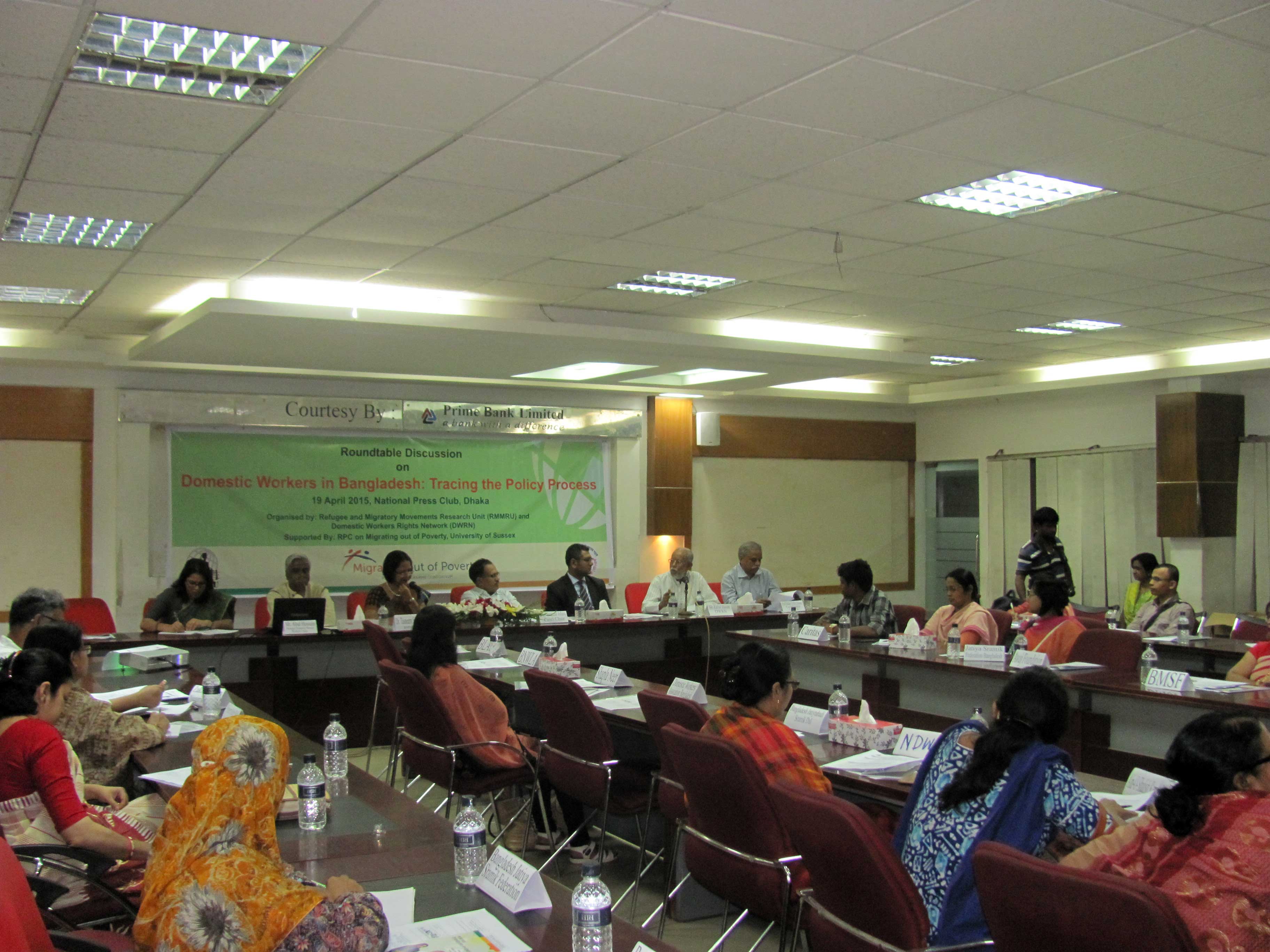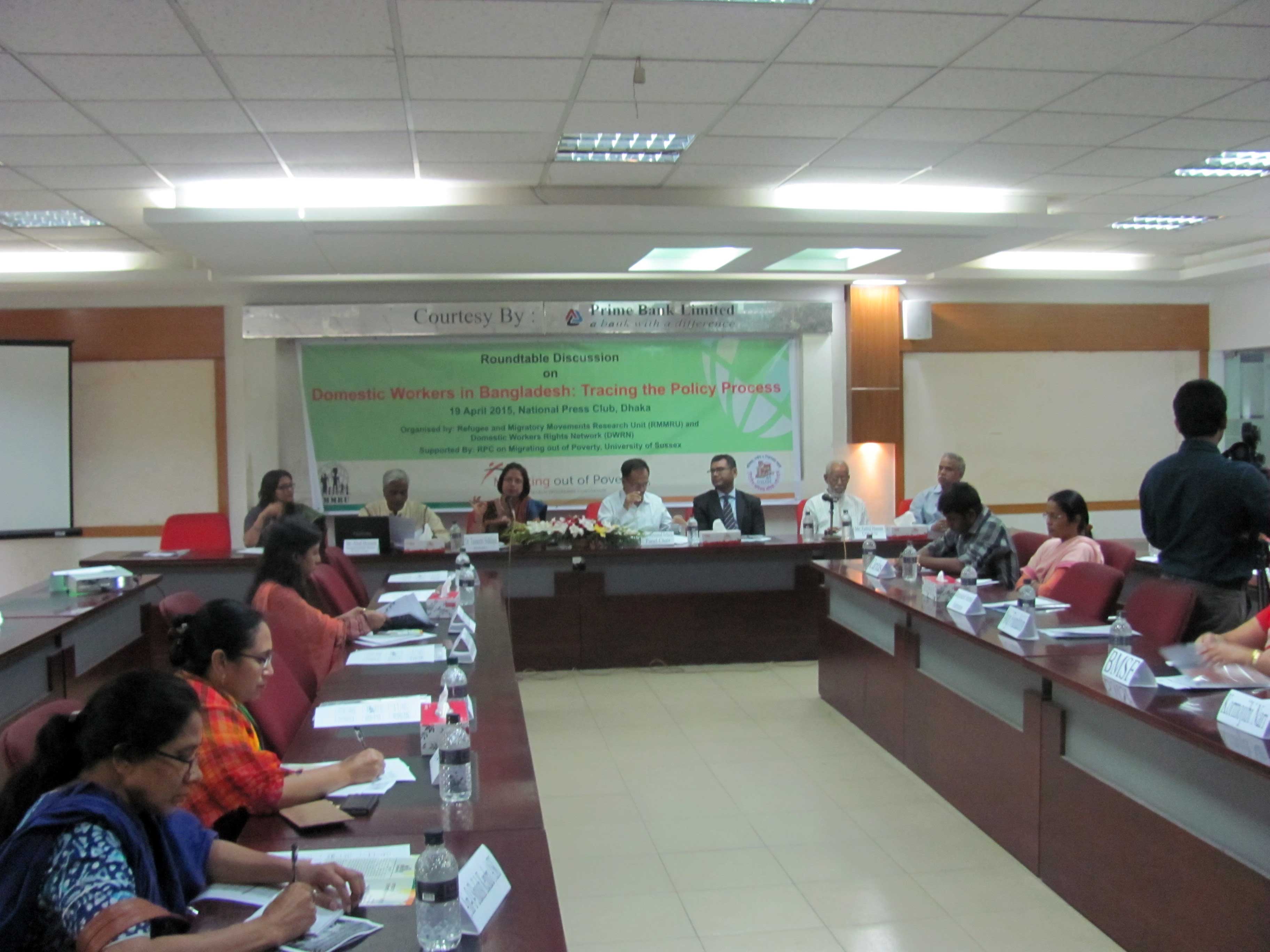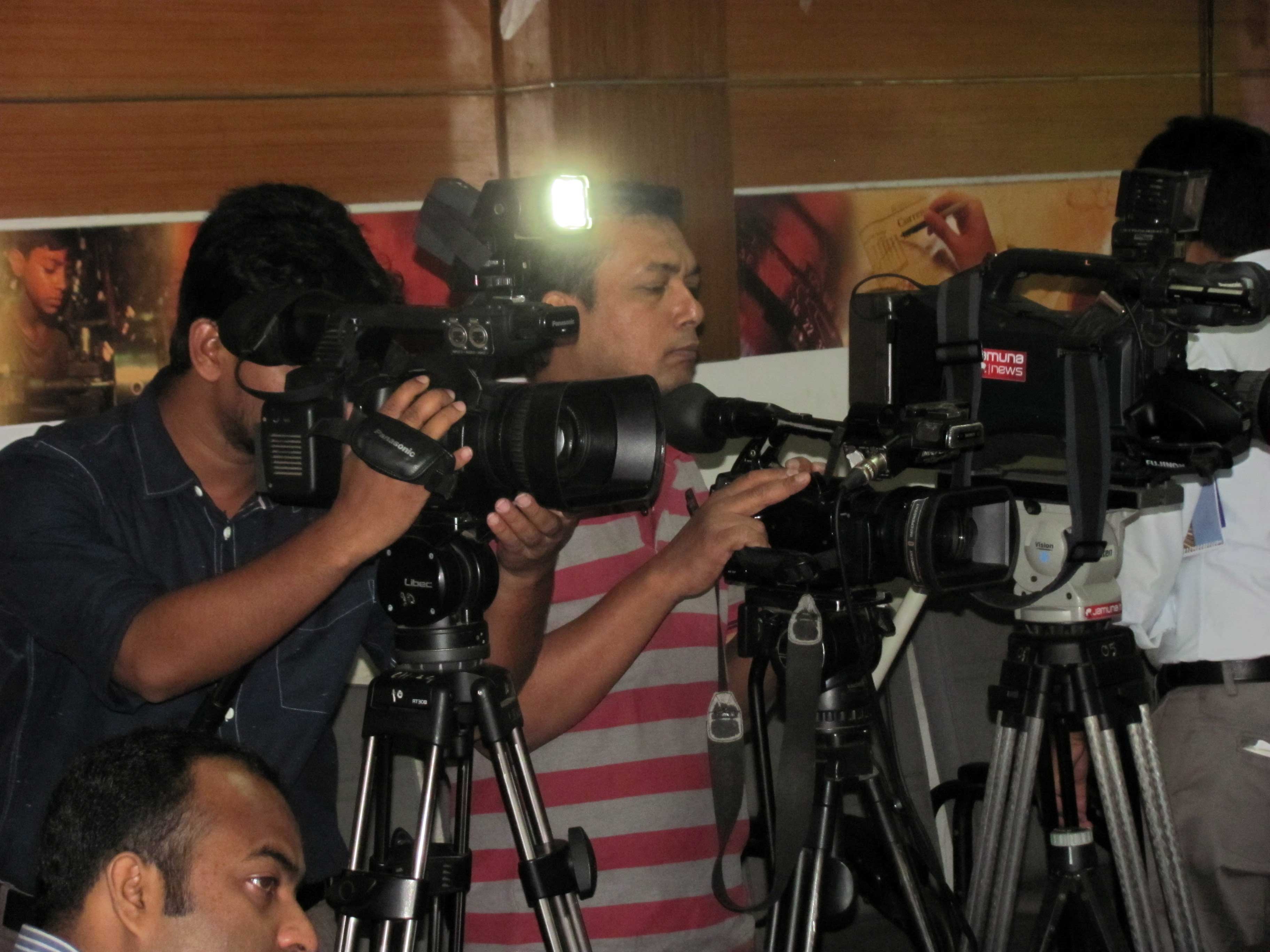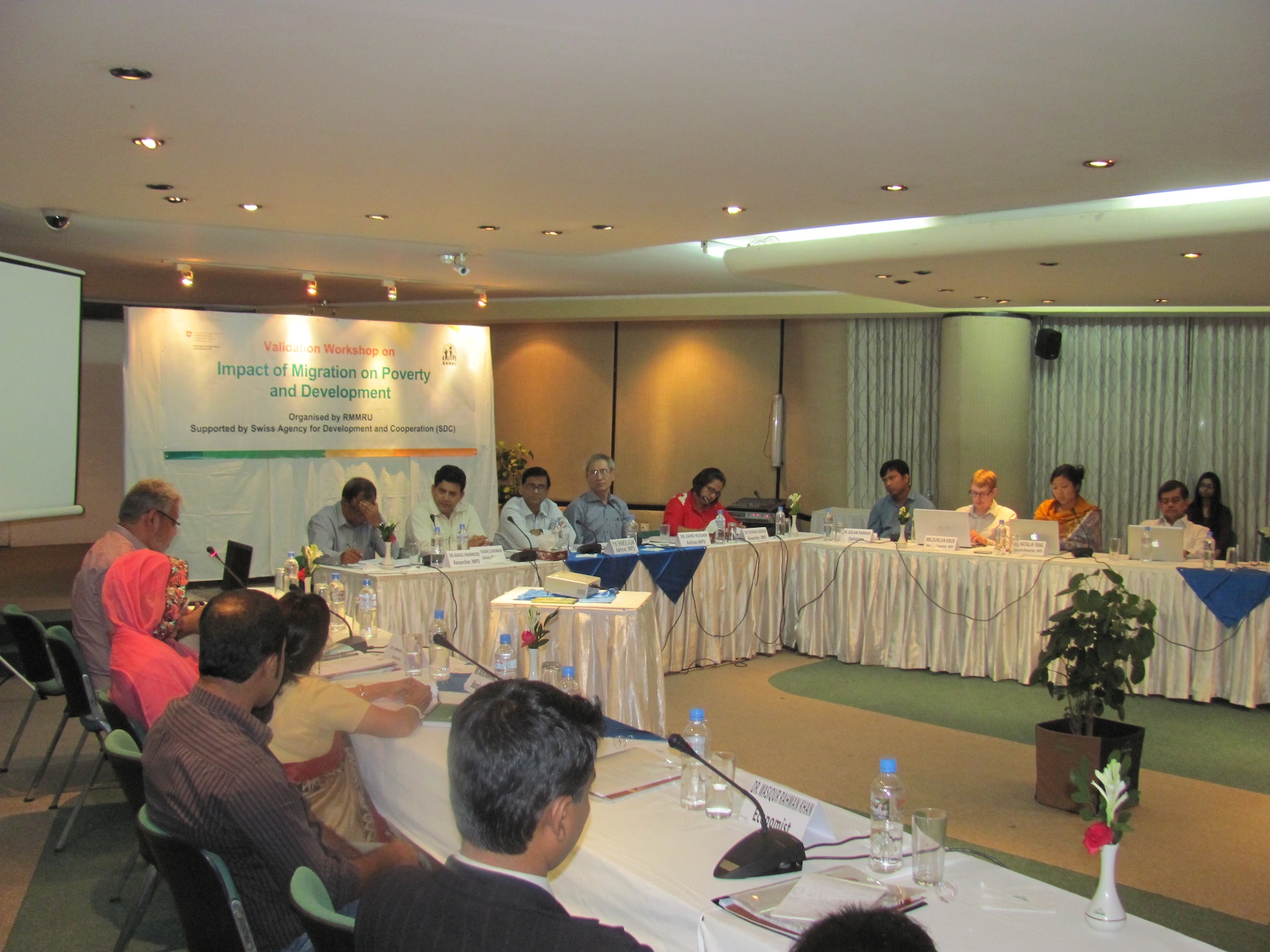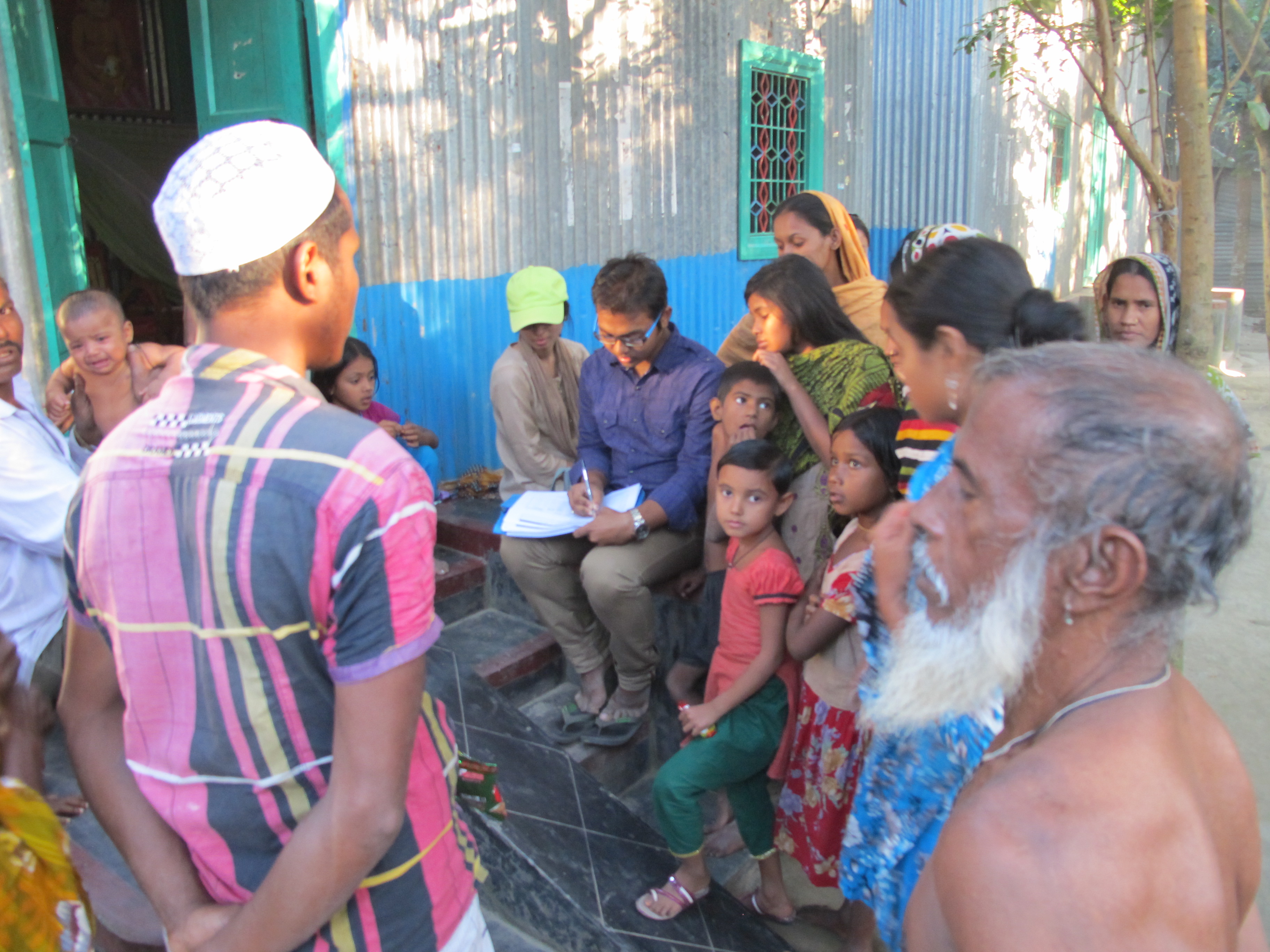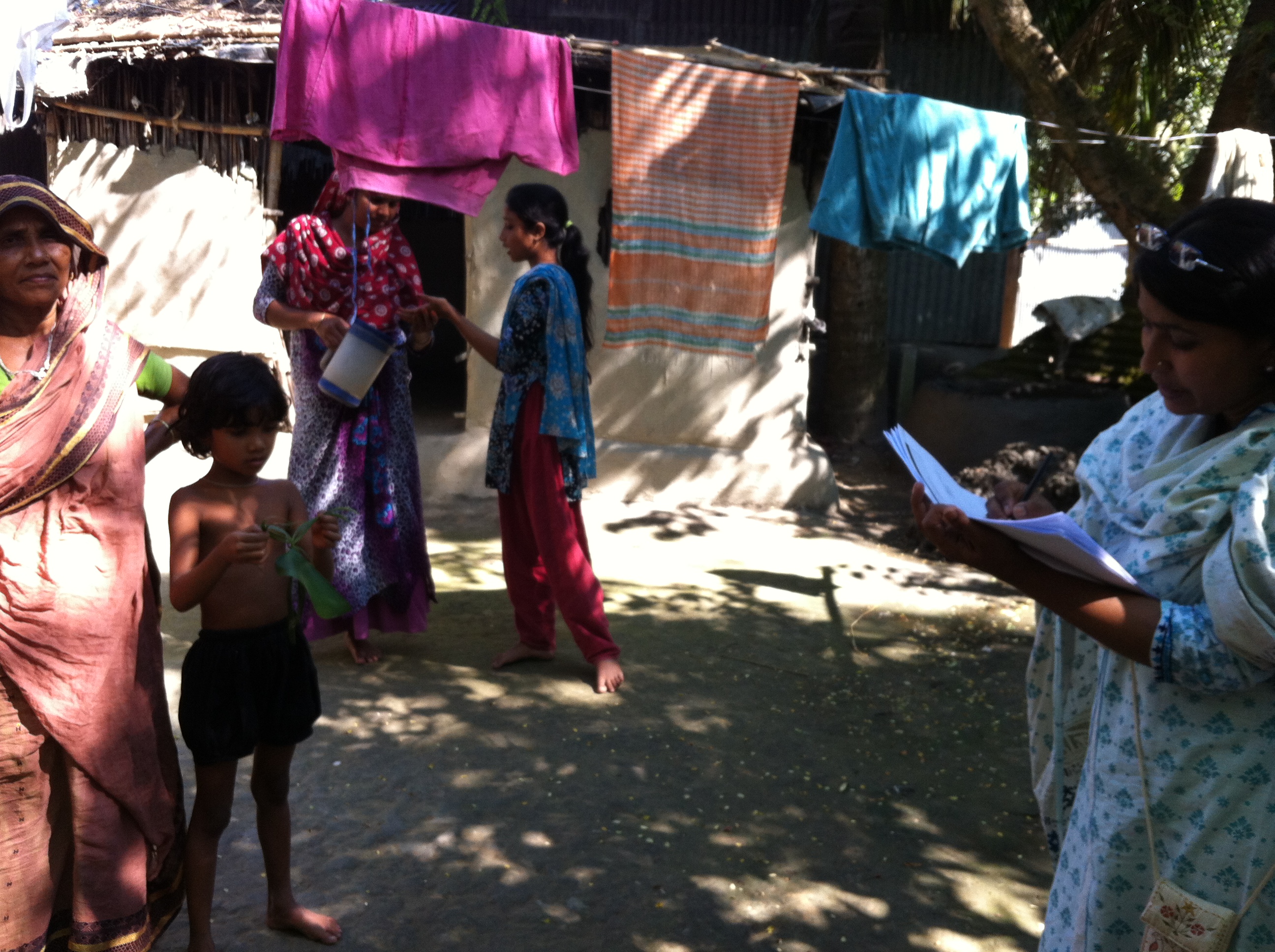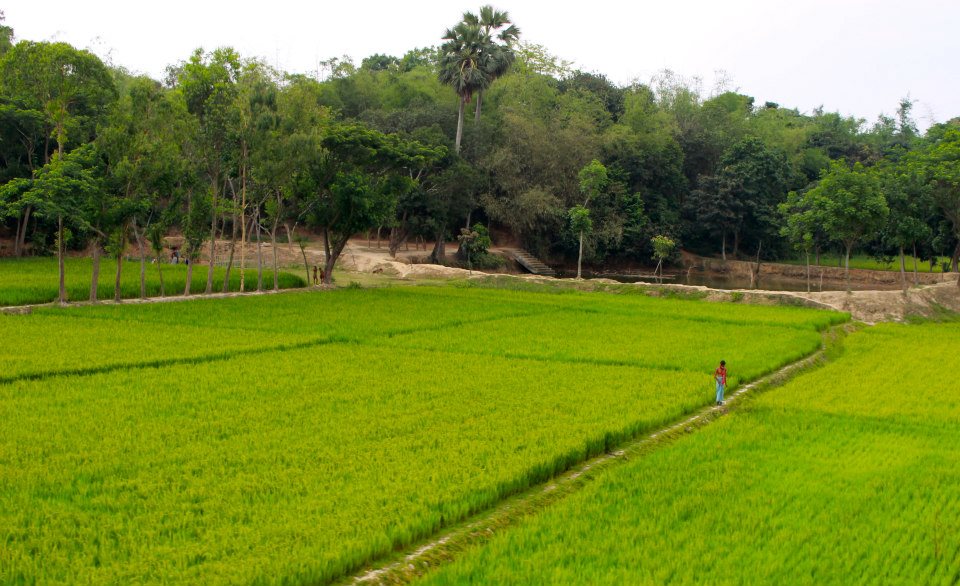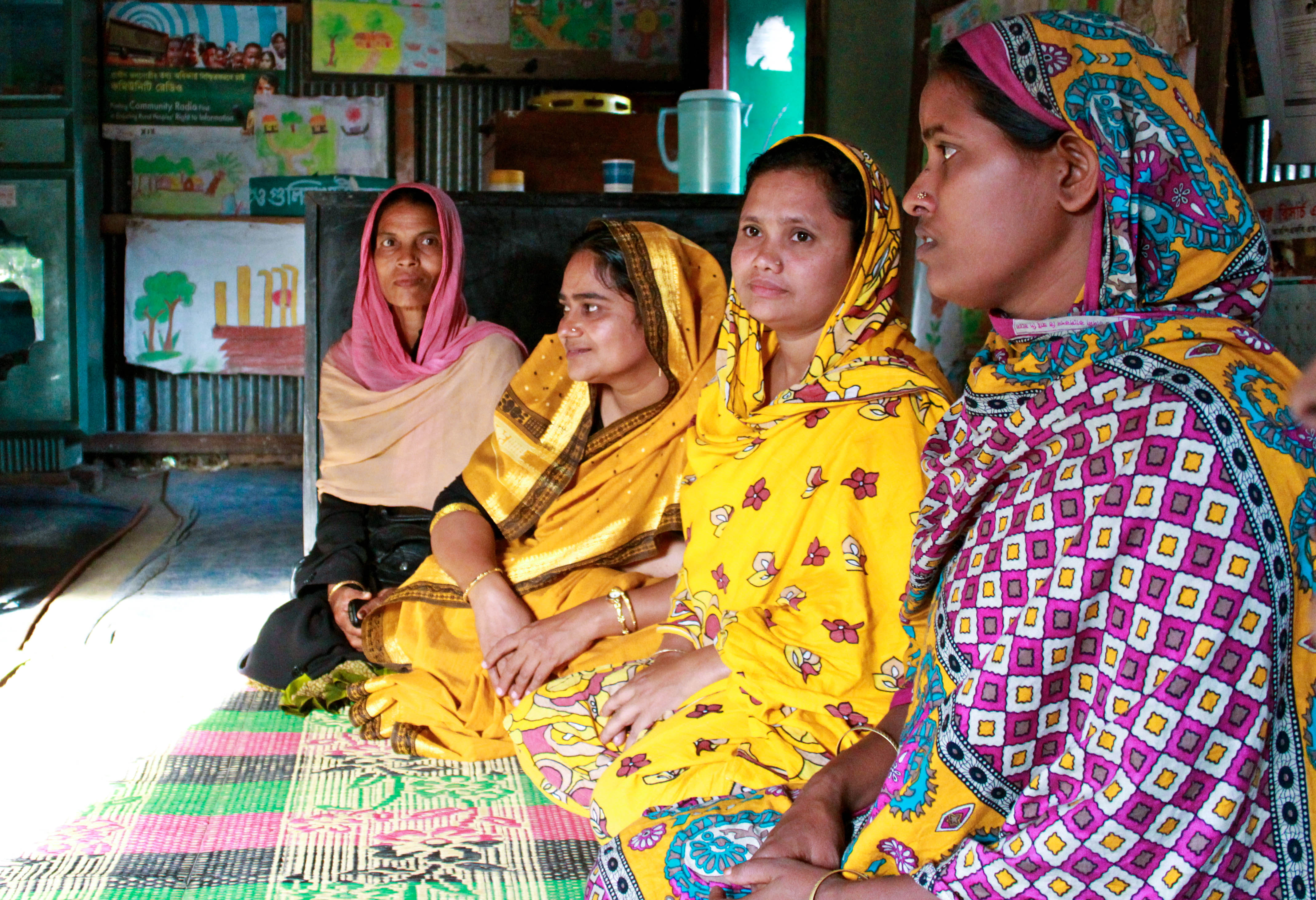Overview
ILO’s Skills 21 – Empowering Citizens for Inclusive and Sustainable Growth project is intended as a catalyst towards realizing a quality, private-sector-driven, inclusive training system for Bangladesh to increase productivity and better employment opportunities in the labour market. Commencing from 01 January 2018, Skills 21 is a four-year project that follows on from and builds upon successful past projects that laid down policy and governance structures needed to manage a quality, responsive, and socially inclusive TVET system.
One of the key interventions of the Project is to support create an enabling environment that is supportive of migrant workers in terms of providing protection, regulating migration, and skilling migrant workers. Specifically, the Project received a top-up rider to support 2,000 returning migrants and their 1,000 family members entering the job market through economic reintegration activities.
In order to proceed with this, the Project invites technical and financial proposals from interested organizations having adequate and demonstrated experience in evidence-based policy research, production of knowledge products, and guiding implementation of migration projects, esp. initiatives on economic reintegration of returnee migrants.
Activities
The main objective of the assignment is to guide the implementing organisation by
- Qualitative and Quantitative data documenting the project’s best practices and lessons and Prepare a report titled- Enhancing Economic Reintegration of Returned Migrants: Best Practices in Bangladesh.
- Preparing case Stories of the returned migrants and their family members who received skills training
- Preparing a training guideline on migrant workers’ economic reintegration for government functionaries
- Conducting a tracer study on existing knowledge of the project of ILO Skill 21
Major Findings:
- More than half of the trainees preferred the NTVQF programme. This is followed by Short Course and EDT training. More than one-fourth opted for each of these two types of courses. RPL training is the least common, accounting for only 2 percent of cases. 69 percent of respondents who have taken training are self-employed. cx
- The RPL and Short Courses categories showed moderate satisfaction, while the NTVQF and EDT categories demonstrated higher levels of satisfaction, with notable portions of respondents finding the training process ‘very useful.’ In the analysis of skill-based job placement support, one-third of the NTVFQ and short course participants found it very useful. One-fourth of the RPL trainees and more than one-fourth of EDT trainees found it very useful.
- Significant differences in awareness about labour market information were noted among different types of trainees, with RPL respondents having the highest awareness (80%). Only 28 percent of those who attended the Short Course respondents have an awareness of the labour market. An overwhelming majority of all types of trainees are well-informed about job opportunities in their local area, indicating strong awareness of local employment prospects.
Funded by: FairSquare
The economies of the six hydrocarbon-rich Gulf states of Bahrain, Kuwait, Oman, Qatar, Saudi Arabia, and the United Arab Emirates (“the GCC states”) are highly dependent on low-paid migrant workers from Asian states such as India, Nepal, Pakistan, Bangladesh, and the Philippines. These workers sustain a wide range of sectors, from domestic service to hospitality to construction. Whereas rights groups, trade unions, academics, and the media have extensively documented migrant worker abuses and identified the laws, policies, and practices responsible, there is a critical gap in this body of research: nobody knows how many of these workers are dying, or the causes of their death. The dearth of reliable information makes it highly challenging to advocate with governments to address this issue.
Under this circumstance, a multi-year project on worker deaths has filled this gap and empowered a network of organisations from Asia that can effectively engage governments in five origin states to promote better protection for migrant workers in the six Gulf states and seek the publication of more detailed data better to inform policymakers in both origin and destination states. The “Vital Signs: Quantifying and Researching Asian Worker Deaths in the Gulf: Building a Coalition for Greater Protection” project was supported by the UK-based organisation, FairSquare.
The objectives of the study
- Low-paid migrant workers in the Gulf states enjoy significantly better protection from risks to their physical and mental health;
- Key stakeholders in the origin states, notably policymakers, are actively and collectively engaged in promoting migrant worker protection in the Gulf states.
Activities
Under this project, RMMRU successfully organised consultation meetings, press conferences, report launching events, discussion sessions, stakeholders’ engagement meetings, policymaker engagement events on labour migrants’ death, access to healthcare in the Gulf countries with parliamentarians, medical professionals, lawyers, migration experts, CSOs, researchers, representative of the private sector, and journalists. As a part of the study, three reports have been published by the Vital Signs partnership on the deaths of migrants in the Gulf, migrant workers’ access to health, and the impact of extreme temperatures and climate change on migrant workers in the Gulf.
Major findings
- More than half of migrant worker deaths are not adequately explained as they are certified without reference to any underlying cause of death, instead of using terms such as “natural causes” or “cardiac arrest.” The report concludes that the most likely reason for this high rate of unexplained deaths is that there are serious and systemic issues with the manner in which the Gulf States investigate migrant worker deaths.
- Easy access to healthcare is particularly critical for low-paid migrant workers in the Gulf due to the multiple adverse health conditions that can result from their work.
- The GCC states’ healthcare services are generally not tailored to the specific needs of this population, and there is obvious evidence of discrimination in access to healthcare for migrant workers, with lack of documentation and affordability the most significant obstacles.
- The inability of low-paid migrant workers in the GCC states to easily access non-emergency healthcare services has a detrimental effect on the general physical and mental health of this population, and it is likely that it is a significant factor both in the number of preventable deaths, and the high rate of unexplained deaths.
- The gradual shift in the GCC states to mandatory private health insurance is more likely to further restrict access to care than to improve low-paid migrant workers’ access to healthcare.
- The long-term exposure to extreme heat in the Gulf leads to chronic health problems that require lifelong treatment. Heat can severely impact internal organs, with the heart and kidneys being particularly susceptible to substantial damage.
Funded by: The Asia Foundation
Migrants dominate the Maldivian workforce, accounting for nearly one-third of the total population. The Maldives has around 169,000 documented and 65,000 undocumented foreign employees. In the Maldives, Bangladeshi migrants constitute the largest group of migrant workers. Despite their major contribution to the host economy, they endure a range of hardships, including confiscation of documents, non-placement against promised jobs, non-payment and irregular payment of wages, arbitrary dismissals, long working hours with little or no breaks, unhygienic housing conditions, etc. Along with these, workers suffer from alienation from the host society, inadequate social support, restricted mobility, and the accompanying diminished feeling of self-worth that renders them vulnerable to egregious human rights violations. Many are unaware of their rights. The concerned agencies of the state, such as the Ministry of Economic Affairs and the Immigration Department (ID), the Labour Relations Authority (LRA), and the Human Rights Commission of the Maldives (HRCM), are underfunded and understaffed to conduct effective public awareness campaigns.
Under such circumstances, RMMRU implemented a project titled "Bangladeshi Labour Migrants in Maldives: Mitigating the Risks and Vulnerabilities to Trafficking and Irregular Migration" funded by the Asia Foundation under the South Asia Governance Fund (SAGF) programme.
The objectives of the study
The project activities, field-based research, a series of training and advocacy activities, and legal support to the returnees were designed under three objectives. Those were-
- To understand the risks and vulnerabilities of irregular migrants from Bangladesh to the Maldives;
- To identify the solutions and develop policy responses to the risks and vulnerabilities in the outflow of irregular labor migrations and the returnees;
- To facilitate access to justice to ensure safe migration to the Maldives and return to Bangladesh in collaboration with the government and CSO stakeholders.
Activities
Under this project, RMMRU conducted fieldwork on both documented and undocumented Bangladeshi migrants among 250 returnee migrants from the Maldives in three high-migration-intensity districts (Cumilla, Tangail, and Dhaka) and 120 current migrants in Malè and Hulumale' of Maldives. It organised an inception meeting, a training workshop for promoting mediation at the grassroots, a capacity enhancement workshop of lawyers, journalists, and CSOs, a research findings dissemination event, a bilateral conference in the Maldives, and a debriefing meeting on Malè bilateral conference at Dhaka. As a part of the project, two policy briefs on the role of stakeholders and the bilateral conference, three flyers on access to justice and legal rights and duties of migrant workers and RAs, and a book on research findings have been published.
Major findings of RMMRU research:
- Ninety percent of the respondents stated that Maldives was their chosen destination. Most of the other 10% said that their agent/dalals were unable to procure visas for Gulf states, and thus they had little option but to come to Maldives.
- Almost all respondents (96%) informed that they secured information about the Maldives as a destination country from relatives and sub-agents. Only 4% of cases were facilitated by recruiting agencies, 59% of cases were by sub-agents/dalals, 36% by relatives, and 4% claimed that they migrated to the Maldives on their own initiative.
- On average, Tk. 205,997 was the cost of migration (the maximum cost was Tk. 375,000, and the minimum was Tk. 32,000).
- 91% of the interviewees have reported being placed against jobs within three months. As many as 33% of the respondents worked in the services sector, such as hotels and resorts. The construction sector accounted for 25%, day labourers for 7%, domestic workers and fisheries for 2% each. The remaining 31% were engaged in water transport, sand extraction, porter, restaurants, service stations, and the like.
- The average monthly income of the current migrants stood at Tk. 35,147. For the documented migrants, Tk. 37,066, and for the undocumented ones, Tk. 25,650. The average last monthly income of the returnee migrants was Tk. 22,586, with a marginal difference between the documented (Tk. 22,595) and undocumented (Tk. 22,539).
- On average, each current migrant remitted Tk. 297,667 over the previous 12-month period. This figure for the cohort of returnee migrants was Tk. 218,477. The average amount remitted by current documented migrants over the last 12-month period was Tk. 312,600, while that of the undocumented migrants was Tk. 223,000.
Social Cost of Migration on the Left-behind Elderlies and Siblings in Bangladesh
Funded by: Swiss Agency for Development and Cooperation (SDC)
The objectives of the study are
- The broad objective of the research is to generate knowledge on the impact of international and internal migration on the left-behind parents, grandparents, other elderlies, and siblings.
- Combined with the previous SDC and RMMRU research on left-behind husbands, wives, and children, this study will provide evidence to the policymakers, civil society activists, and development partners to integrate the interest of left-behind household members in national planning, particularly in migration-related policies.
Major findings
- Without the financial contribution of the elderlies, migration of the young adult members of the households would not be possible. Both male and female elderlies contribute to making the migration effort of the concerned family member successful. Male elderlies have their sources of finance, whereas female elderlies use their kith and kin network to generate resources. Therefore, it is natural that the elderlies will have specific aspirations to be fulfilled through the migration of their household members.
- Contrary to popular belief, siblings contribute financially and non-financially to the migration journey.
- Though, along with household members, the benefits of migration are enjoyed by the state and private sectors, the social and economic costs are only borne by the individual members of the households. No formal intervention by the government, private sector, or civil society organizations is there to reduce the social migration costs borne by the elderlies and their siblings.
- Social costs and benefits of migration borne by the elderlies and siblings vary based on age, gender, ability to earn independently, and physical fitness.
- A section of both elderlies and siblings developed their agency in addressing the social and economic constraints imposed upon them due to the migration of their family members.
Migration, Sustainability and Transformation (MISTY)
Funded by: The Economic & Social Research Council
Overview
The project is international in nature as the topics of mobility and migration in sustainability: incorporating well-being, and the changing spatial distribution of environmental risks are global challenges. The research contributes to international research on the governance of societal transformations by explicitly interrogating the governance pathways to sustainability transformations given the role of migration in place-based sustainability. The analysis focuses on a broad spectrum of migration types that includes urbanization transitions and international movements, transhumance, refugee flows and undocumented migration. It will incorporate migration transition dynamics into new country level indicators of migration and sustainability. This contributes to transformations research by bringing new concepts and information into conceptualisations of transformation processes, where population projections and projections of its spatial distribution do not systematically account for the migration-environment interactions developed here.
The research is significantly co-designed with external partners, both in their current form and in the specifics as the research design will be implemented. The concepts presented in this proposal have been co-designed through engagement with localities in the Netherlands, Belgium, Mozambique, Bangladesh, Ghana and the US.
Objectives
- To expand knowledge of transformations by incorporating migration dynamics, specifically: the impact of aggregate flows of people on sustainability; the consequences of individual level life course dimensions of mobility and sustainability; and the governance of migration and its consequences for sustainability.
- To integrate this new knowledge with methodological innovation into planning processes and strategies for sustainable transitions.
- To build capacity for the migration-environment research community to engage in research on transformational challenges.
Major findings
- If migration flows increase aggregate net wellbeing, decrease inequality, and do not increase overall environmental burden, they have the potential to be a major force of positive societal transformations towards sustainability.
- Migration that increases aggregate wellbeing; reduces inequality and, hence, disparity between places, regions and sectors of society; and that reduces environmental burdens, overall would contribute to sustainability transitions.
- Gendered, intergenerational, and intersectional approaches from the social sciences could help identify, analyse and mainstream social equity dimensions of the climate-migration nexus both within the context of slow onset events and in the field at large.
- Sustainable development provides a coherent, comprehensive, and integrative framework for the further development of loss and damage scholarship.
- A variety of environmental dimensions affect migration intention. This result confirms similar findings that long-term environmental decline in migration source areas affects migration decisions more than short-term variability.
- Socio-economic motivations and socio-demographics remain the principal drivers of migration intention in population source areas in populous delta regions.
Impact of International Short Term Contract Migration on Poverty and Development: Panel Survey- Wave III
Supported by: Swiss Agency for Development and Cooperation (SDC)
OVERVIEW:
Impact of Migration on Poverty and Local Development study project is supported by the Swiss Development Agency for Cooperation (SDC). The project aims at producing a panel data conducting three rounds of survey revisiting the same households over ten years in three years interval. The third round is titled as IMPD-3. The study covered surveying a total of 6,143 international, internal and non-migrant households of 20 districts of the country. Three of them are pockets of female migration. The most pressing issue for further research is the question of why internal migrants enjoy relatively modest expenditure growth, compared even to non-migrant households. This may be because of constraints such as limitations on human and physical capital available to internal migrant households or it may be due to selection, i.e., it was households who had relatively poor growth prospects, to begin with, who engaged in internal migration.
Objectives
- In order to make the evidences robust, any panel data requires studying the households for 4-5 times. The third round survey will be designed to make the panel data robust.
- In the second round of the survey around 1500 new households were added. While comparing household situation between the 2 surveys these households remained outside. The third round of survey will allow analysis based on all 6000 households.
Major findings
- Consumption poverty in study areas has declined sharply despite the onset of the COVID-19 pandemic and multiple climate change related disasters between 2017 and 2020.
- Poverty rates have been the lowest among international migrant households.
- An important finding of the research is that, from Wave 1 to Wave 2 and from Wave 2 to Wave 3, after adjusting for inflation the real cost of migration has reduced. Still the cost of migration remains very high.
- Remittances sent by the international migrants have reduced between the last two waves. Compared to Wave 2, during Wave 3, real remittances have reduced by 23 percent.
- The migrants perceive that the predominant reason behind their migration decision in economic determinants are to a large extent shaped by climate change related factors.
The Next frontier of Climate policy: Joining the dots of Bricks, Trade and Embodied Emissions from Cambodia and Bangladesh to the UK
Funded by: Royal Holloway, University of London
OVERVIEW:
As the UK economy transitions away from manufacturing, the nation’s urban infrastructure is becoming ever more prone to carbon embodied in the global materials trade. This is exemplified by growing brick imports to the UK. Having exceeded its capacity to produce bricks domestically, the UK’s response to its looming ‘housing crisis’ has left domestic brick production insufficient to meet demand, leaving the UK facing a ‘brick deficit’ of more than half a billion bricks per year. The result has been a rise in brick imports to more than 400 million per year, mainly from the European Union but increasingly from outside Europe. The UK now imports 16% of its total brick stock, the highest proportion in the world. In terms of the emissions embodied in UK construction, this is cause for significant concern. In particular, the transportation costs associated with importing heavy, high-volume materials such as bricks, ensures that they are associated with a considerably higher volume of CO2 emission than those produced domestically.
In addition, the wider environmental and social footprint of these imported bricks, recognised as a source of key humanitarian and socioeconomic issues, including modern slavery, has similarly been ignored in UK policy. With a 59% year on year growth in non-EU bricks, current trends evident in HMRC data suggest that non-EU bricks will surpass EU produced bricks in under 5 years – a trend that Brexit is expected to exacerbate. The far greater distances involved in transporting bricks from major non-EU exporting countries means that the carbon emissions embodied in brick imports from these non-EU sources are several times higher than those produced domestically. Whilst brick importation from the global South in this way is a relatively new phenomenon, it is one that is growing rapidly. In 2015, the proportion of imported bricks arriving to the UK from outside the EU amounted to just 1.1%, but within five years this had increased to 8.8%. From a carbon accounting perspective, the scale of the increase is starker still. The exceptionally high transportation emissions associated with brick imports from the global South mean that they carry an outsize influence, accounting for 25.5% of all emissions from brick imports in 2019. In addition, brick production in the South Asian brick belt has a profound effect on the local environment. Brick production linked to UK imports results in heightened vulnerability to climate change, increasing the frequency and intensity of droughts, floods and crop failures in the surrounding area. Brick kilns in South Asia are notorious spaces of labour exploitation with low, mostly piece-rate, wages for long hours of work. Wage arrangements often involve debt bondage to keep workers attached to the kiln for months or years on end. Consequently, the labouring population working in brick kilns consists of some of the poorest and marginalized sections of the informal workforce. Child labour is widely prevalent, workplace hazards are common and living conditions are generally poor. Nevertheless, bricks produced in conditions like these are now increasingly commonly used in the UK.
Climate Induced Migration (CIM)
Preparation of Action Plan for the implementation of National Strategy on Internal Displacement
Funded by: PROKAS Programme of British Council
OVERVIEW:
Disaster and climate change-induced displacement has been identified as one of the most pressing issues facing the achievement of Sustainable Development Goals. According to a report by the World Bank in 2018, by 2050, 140 million people in Sub-Saharan Africa, South Asia, and Latin America may be displaced, with 13 million from Bangladesh alone. However, the World Bank report also shed light on the potential of reducing displacement through Disaster Risk Reduction (DRR) and Climate Change adaptation measures. The Cancun Adaptation Framework and The UN Sendai Framework both emphasize the necessity of mitigating and responding to the impacts of climate change and disasters on displacement. Furthermore, the Co-Chairs’ summary of the 2019 UN Global Platform on DRR highlights the need for the international community to take action in order to reduce disaster-induced displacement.
Bangladesh is one of the most vulnerable countries to the effects of global climate change, with the 6th highest displacement rate in 2017 among 135 countries. Floods, tropical cyclones, storm surges, droughts, river banks and coastal erosion are some of the main causes of displacement. It is estimated that by 2050, 1 in every 7 people in the country will be displaced. The government of Bangladesh acknowledges the grave implications that displacement has for individuals and communities and is committed to shifting its approach from relief-oriented to proactive and comprehensive displacement management. To this end, the government has adopted The National Strategy on Internal Displacement Management 2021 (NSIDM), to provide a rights-based strategy for the issue. An action plan is needed to effectively implement the strategy and must draw from multiple disciplines to be successful.
The Ministry of Disaster Management and Relief (MoDMR) mandated RMMRU to draft a National Action Plan for the implementation of the Strategy encompassing knowledge of prevention measures, Standing Orders on Disasters (SOD), and actions for durable solutions in the post-displacement phase. This National Action Plan is designed to be globally appropriate, locally applicable, and explicitly rights-based, taking into account national and international standards and protocols. The National Action Plan 2022-2042, includes 27 ministries and its departments, NGOs/CSOs, and development partners to implement it. As part of this plan, NGOs and CSOs have been designated to support the implementation of the specified activities. To develop the document a systematic fieldwork was conducted in six disaster-prone areas in Bangladesh to gather the voices of communities at risk of displacement and those that have already been displaced.
Using Photo-voice in ensuring participation of the displaced in Preparation of Action Plan for the Implementation of National Strategy on Internal Displacement
Funded by: United Nations Office for Disaster Risk Reduction
OVERVIEW:
Disaster and climate change-induced displacement is a major risk to the achievement of Sustainable Development Goals. According to the World Bank (2018), it is estimated that a total of 143 million people from Sub-Saharan Africa, South Asia, and Latin America may be displaced by 2050, with 13 million of them from Bangladesh. Of this, half of the internal migration in Bangladesh is estimated to be caused solely by climate change. However, the Cancun Adaptation Framework and UN Sendai Framework emphasise the need to reduce and address the impacts of climate change and disasters on displacement. The 2019 UN Global Platform on DRR Co-Chairs’ Summary further calls on the international community to make more efforts in reducing disaster-induced displacement.
The Government of Bangladesh has recognised the severe implications of displacement for the rights and entitlements of individuals and communities and has thus shifted its approach from relief-oriented to more proactive and comprehensive displacement management. To this end, the National Strategy on Internal Displacement Management 2021 (NSIDM) was adopted, and the Government mandated RMMRU to develop an action plan for its implementation. To ensure participation from the displaced population in action plan preparation process, RMMRU designed a research methodology called photo-voice that utilises an innovative qualitative approach to incorporate the voices of the displaced into policy process. Through this, the RMMRU team were able to uncover the varying impacts of displacement, such as those based on age, sex, ethnicity, geographical location, economic status, and disability, as well as the vulnerabilities of men and women, underlying causes, and strategies for disaster preparedness. The findings collected through the photo-voice method at field sites were used to compile evidence, actions and recommendations into the National Action Plan for managing displacement caused by disasters and climate change.
Building resilience to violent extremism among Bangladeshi migrant workers
Funded by: UK’s Economic and Social Research Council (ESRC) and Department for International Development (DFID), under the call Development Frontier Research Fund
OVERVIEW:
The broader objective of this project is to:
a) Generate knowledge on current level of exposure of Bangladeshi labour migrants to online or other forms of propaganda of extremist groups.
b) Generate necessary information to help policymakers take necessary pre-emptive intervention to protect the labour migrants from falling prey to the terrorist groups.
c) Enhance RMMRU’s understanding on PVE and migrant workers; capacity to aware migrant workers on dealing with the risk factors of violent extremism, and advocacy for a PVE informed migration system.
The specific objectives are to:
• Understand how exposed are potential male and female migrants are to mobile, internet and social media?
• Find out what form of social media do they embrace once the Bangladeshi workers migrate?
• How do they react if they receive extremist information through social media before they migrated?
• Explore what are the other forms of social interactions which can expose migrants to extremist forces.
• Locate all form of mechanism through which extremist forces may establish contact with the Bangladeshi migrant workers both male and female.
• Explore under what circumstances the extremist group may gain sympathy of male and female migrants which in the long run would make them vulnerable.
• Find out role of employment status (regular/irregular) age, gender in respect to vulnerabilities of the migrants to extremist ideology.
• Provide suggestions on how relevant government offices and civil society organizations can inform the aspirant migrant as well as the current migrants about the ulterior motives of terrorists and how the migrants can protect themselves from the actions of the extremist.
• Create information to design PVE inclusive training and awareness programme for migrant works.The research outcomes will benefit the Bangladeshi migrant workers population who are working in Gulf, other Arab and South-east Asian countries to become resilient to violent extremist influence. The research will also benefit the government and non-government agencies to initiate evidence-based policies and programme.
Safe and Sustainable Cities: Human Security, Migration and Wellbeing
Funded by: UK’s Economic and Social Research Council (ESRC) and Department for International Development (DFID), under the call Development Frontier Research Fund
OVERVIEW:
This project is a collaboration between the University of Exeter, in the UK, and the Refugee and Migratory Movement Research Unit, in Bangladesh. The project is for 18 months.
The project aims to create new insights building on existing and emerging knowledge on human security, migration and environmental interactions on (1) the drivers of migration to cities; (2) circumstances of immobility, and (3) issues of place, identity, and networks in migrant populations. The research addresses key challenges in the Sustainable Development Goals on human settlements, sustainable cities and infrastructure, and on poverty, wellbeing and human security by examining questions of economic integration and wellbeing in migration destination areas. According to the United Nations, there is insufficient urban data available on indicators associated with SDG 11 on Inclusive, Safe, Resilient and Sustainable Settlements, in many cities, especially in Africa and Asia where 90 percent of urban growth is expected to occur by 2050.For example, in many cities absence of data on access to safe, accessible and sustainable public transport, or the proportion of cities with civil society able to participate in urban planning and management, mean that many processes and dynamics are missing from official censuses and household surveys compiled by national statistics offices. Key indicators relating to urban sustainable development goals are lacking in particular that can help inform policy-makers about access to services and resources that improve living conditions for new migrant populations in expanding urban environments. Therefore, the specific objectives of the project are:
• To examine the challenges of rapid migration to urban settlements in terms of the sustainability, security, integration, and wellbeing of new populations.
• To use this new knowledge to generate insights on how new migrant populations can be empowered into urban planning processes in Chittagong.
• To examine the implications of project findings for the implementation of Sustainable Development Goals (SDGs), particularly SDG 11 on Inclusive, Safe, Resilient and Sustainable Settlements, SDG 8 on Inclusive Growth, and SDG 3 on Healthy Lives and Wellbeing.
Developing effective up-to-date Research that benefits migrant workers are one of the primary goals of RMMRU. Below is a list of the Research RMMRU has engaged in during the past:
Social cost of Migration on Families Left Behind
Funded by: Swiss Agency for Development and Cooperation (SDC)
OVERVIEW:
DEltas, Vulnerability and Climate Change: Migration and Adaptation (DECCMA)
Funded by:Department for International Development (DFID)
International Development Research Centre (IDRC)
Collaborative Adaptation Research Initiative in Asia and Africa (CARIAA)
Overview of DECCMA Project:
DEltas, Vulnerability and Climate Change: Migration and Adaptation (DECCMA) is new 5-year long research project launched on 2014. The DECCMA project will analyse the impacts of climate change and other environmental drivers across contrasting deltas in Africa and Asia. Specifically, the DECCMA project will analyse the sustainability of migration as an adaptation option to climate change and associated vulnerabilities across three deltas: Ganges-Brahmaputra-Meghna (GBM), the Mahanadi delta and the Volta delta.
Progress on WP 3:
The main objective of WP3 is to assess the role of migration as an adaptation in deltaic environments with a changing climate. RMMRUcarriedout following activities since the beginning oftheDECCMAProject.
• Produced a working paper on Migration in the GBM Deltabased on literature review
• A developed theoretical framework of migrationfortheDECCMAproject
• Prepared the first draft of sampling strategy for the social survey at household level (also applicable for WP6)
• Formulated questions and checklist for initial pilot fieldwork (FGD)
• Conducted and consolidated key informant interviews with stakeholders
• Participated at GBM delta first District Level Stakeholder Workshop at Khulna(also applicable for WP6)
Progress on WP 6:
The major aim of this work package is to identify, scope, types, and sustainability of adaptation options (including migration) occurring in deltas, with a focus on adaptation at the household and national level. RMMRU carried out the following activities since the beginning of the DECCMA Project.
• Developed inventory protocol to synthesize adaptation practices
• Identified feasible and realistic planned adaptations from the available adaptation literature
• Drafted a paper on gender in climate change policies in Bangladesh
• Submitted abstract on ‘Adaptation for future’ (Gender aspects of adaptation) held in the Netherlands, 10-13 May 2016.
Gendered practices of remittance use and the shaping of youth aspirations: A case study of Bangladesh
Funded by: RESEARCH PROGRAMME CONSORTIUM ON MIGRATING OUT OF POVERTY
OVERVIEW:
• What gendered patterns of remittance use can we observe?
• Do remittances sent by migrants allow long-term investments in human capital and education?
• How does migration affect the life choices of young people living in migrant communities? The study is following a qualitative approach involving both primary and secondary methods of data collection so as to enable ourselves to understand human behaviour at a personal level.
• A media stakeholders' meeting has been organised.
• Fieldwork has been completed.
• Field data has been analysed thematically.
• The draft research report has been prepared
• Two articles have been published in the national newspaper based on research findings.
• A policy brief has been drafted
• A Public Service Announcement (PSA) is being produced.
Policy Process Formulation: A case study of domestic workers in Bangladesh
Funded by: Research Programme Consortium on Migrating out of Poverty
OVERVIEW:
Since 2007, the Domestic Workers Rights Network (DWRN), an advocacy coalition of rights-based NGOs and trade unions in Bangladesh, has been working with the Government of Bangladesh to develop a domestic workers policy. A draft ‘Domestic Workers Protection and Welfare Policy (DWPWP)’ was adopted in 2007, and since then it has gone through several changes, with inputs from the workers, employers, and the Ministry of Labour and Employment.
This study adopts a ‘3Is Framework’ to investigate which institutions, ideas, and interests shape the position of various stakeholders involved in the domestic workers' policy formulation process.
PROGRESS
IMPACT OF MIGRATION ON POVERTY AND DEVELOPMENT
Funded by: Swiss Agency for Development and Cooperation (SDC)
OVERVIEW:
The Impact of Migration on Poverty and Development (IMPD) is the much-anticipated survey research that RMMRU launched Sept/Oct 2013. The survey will generate panel data across diverse low, medium and high migrant districts of Bangladesh. 5000 internal and international, female and male, migrant and non-migrant households will be surveyed every 2 years for 10 years to elucidate the impact of internal and international migration on the household and the broader community. This research will focus on gendered effects of migration, to gain an understanding about how migration directly or indirectly affects the participation and autonomy of women in the household and in the community. The study will also engage in sustainable strategies for economic growth through enterprise development as a result of migration in communities, and expand on conditions that facilitate investment in the local economy.
PROGRESS
RMMRU organized a validation workshop on October 22, 2013, for advisory board members, government functionaries, NGO representatives, researchers, and academics to provide input and guide the methodology for IMPD. From November 22 to 24, 2013, the RMMRU team prepared a training orientation for field research interns in preparation for the first stage of field research. Please check past events for more information. RMMRU is currently undergoing the first stage of its 10-year national migration survey, Impact of Migration on Poverty and Development.
Time Frame: 2010-2017
Partners: Migrating out of Poverty Research Programme Consortium (RPC), University of Sussex, UK
Funding: Department for International Development (DFID), UK
Time Frame: February 2012- July 2013
Partners: Sussex Center for Migration Research (SCMR)
Funding: CDKN
